Text
Understanding Food Addiction. 5 Steps to Break Free
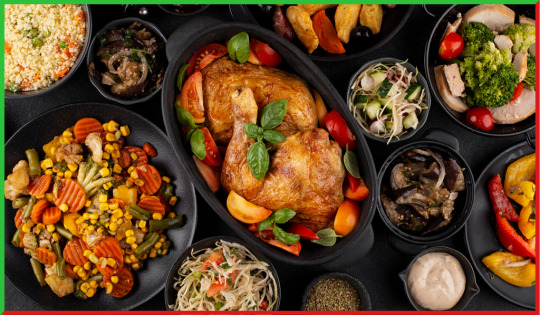
What is food addiction and why do some struggle with it more than others?
Food addiction is when a person feels like they cannot live without certain foods or eating large amounts. Some people seem to effortlessly stay slim while others struggle immensely with overeating. What causes this difference? The root is stress, which is the plague of the 21st century. Let’s unpack the psychology behind it.
Our survival instinct can work against us
One of our strongest human instincts is self-preservation. For millions of years, dangers like predators and competitors within our group posed constant threats. So our brains evolved a powerful survival instinct that activates our internal resources to face threats.
In the modern world, life-threatening dangers are rare. Yet our primal survival instinct still perceives mundane stresses as threats and tries to prepare us for “fight or flight.” This builds chronic tension and anxiety.
We cannot openly act out fear and aggression today. So this stress simmers inside, often without our awareness. A stern look from a boss can trigger the same neurological reaction as facing a tiger in the forest!
How the autonomic nervous system drives stress and relaxation

To mobilize our energy or promote relaxation, we have the autonomic nervous system. It has two branches:
Sympathetic – Triggers the “fight or flight” response. Raises blood pressure, accelerates heart rate, and releases adrenaline and cortisol.
Parasympathetic – Activates “rest and digest.” Slows heart rate, supports digestion, and releases growth hormones.
These systems work in opposition and cannot be active at the same time. Stress always involves the activation of the sympathetic system. There is no stress without it!
What happens when we overeat? The parasympathetic system takes over to handle digestion. This calms the sympathetic system and reduces anxiety and tension.
How food addiction develops
Constant stress creates discomfort, like being on alert for an attack. This is an unnatural state for our brains. Overeating triggers parasympathetic activity, switching off the stress response.
A powerful association develops – eating = comfort and reduced anxiety. This is reinforced over the years, often starting in childhood when parents offer sweets to soothe a child. As adults we continue this pattern, rewarding ourselves with food.
Key points
– Chronic stress keeps the sympathetic system engaged, causing tension.
– Eating large amounts activates the parasympathetic system, calming stress.
– A strong neural pathway develops between eating and anxiety relief.
How to overcome food addiction

1. Practice other methods to manage stress, like exercise. I’ll cover the science behind this in an upcoming article!
2. Never use food as a reward. You’re not a dog.
3. Don’t eat to cope with problems or stress.
4. Never tell yourself “One bite won’t hurt.”
5. Consider consulting a therapist for the treatment of anxiety disorders. There’s no shame in getting help.
I’ve given a brief overview of how food addiction develops. Share this article and subscribe for more! That wraps up today’s info on understanding and overcoming food addiction. Bye for now!
#diet#healthyeating#slimmingworld#nutrition#healthyfood#healthyliving#loseweight#fatburn#burningcalories
1 note
·
View note
Text
Forget Crash Diets – Here’s How to Lose Weight Forever
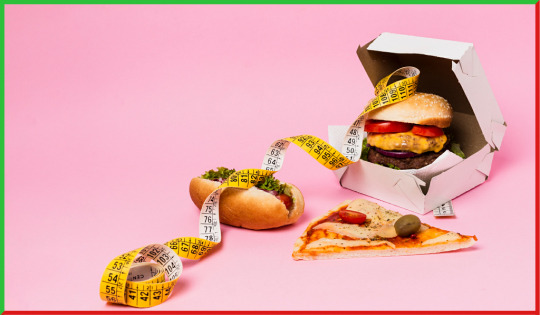
The question I hear most often from my clients is: “Will the weight come back after the diet?” In this article, I will answer it and also debunk a couple of myths that hold us back. We are all adults who can think for ourselves. When we want something, we mentally open a “project” called “I want”, which includes setting goals and estimating timeframes and resources required to achieve the goal.
Often our “projects” are focused on material things – a new phone, car, apartment, shoes, diploma, etc. We are used to thinking in material terms. But when we finally open an “I want a new body” project, we don’t realize how different this project is.
The Consumer Society Mindset

Let’s consider a prototypical hero of our time – a young man who wants a new iPhone. Or it could be an older businessman who wants the new Range Rover model. The point is, they decide to achieve their goal by earning money or taking out a loan. It’s good and worthy to work towards your goals rather than complain and do nothing. The iPhone is pretty cool, girls look at you with respect, and our hero chooses a job that pays more. But did he like that job in the first place?
Go to Google and search for “Monday demotivator” and then “Friday demotivator” – you’ll see from social media monitoring that every Friday is a holiday in a consumer society, while every Monday brings mourning. We have a Friday cult.
In a consumer society, it’s standard to hate your job. You’re supposed to be in a state of intifada with your boss. You’re supposed to love your paycheck. And it’s through this suffering, discomfort, and self-denial that our young man finally acquires the coveted iPhone.
Following the pattern, he immediately tells his hated job to go to hell now that he has the iPhone. But then he discovers the fundamental difference between his body and the iPhone. If you quit your hated job, the iPhone stays with you unchanged. But if you quit your hated lifestyle, your body will soon revert to reflect your current reality. This is inevitable due to the law of conservation of energy. We can’t gain weight while our energy expenditure is less than our intake. Trying to violate this law is like trying to create a perpetual motion machine.
So whenever I hear “I barely eat anything and still gain weight”, I recommend applying for the Nobel Prize. Because either it’s not true, or you have proof that overturns the law of conservation of energy.
Conclusion: Your appearance depends not on the type of diet but on your current lifestyle. If you change your diet, your appearance will change over time. After a diet, the weight will always come back. How quickly? That depends only on your genetics and whether your weight loss was accompanied by increased metabolism. To continually improve your appearance, there is only one way – never go on a diet. Switch to proper nutrition, forever.
The Hard vs Easy Way

Now I’ll compare the hard and easy ways to lose weight, first just by their feelings and effects, and then explain what they are.
Hard way: leads to yo-yo-ing between weight loss and regain, with increasing amplitude. Each time it gets harder to lose weight.
The easy way: slowly but surely improve your appearance.
Hard way: Each time involves the agony of giving up your favorite foods.
The easy way: involves discomfort for about 2 weeks to 1 month maximum.
Hard way: Pleasure comes not from the taste of food, but from the amount consumed. The easy way provides 10x more pleasure from smaller amounts of food.
Hard way: reduces the quality of life.
The easy way: increases the quality of life.
Hard way: saps your energy and ability to enjoy life.
The easy way: frees up energy and time to enjoy life.
Hard way: requires constant monitoring and control.
The easy way: runs on autopilot, requiring zero time for control.
And of course, the hard way unfortunately damages health, while the easy way improves it.
Are you intrigued yet? Don’t be scared by what I’m about to tell you – it is true and much simpler to implement than you think.
The hard way involves regularly going on diets, changing your diet, and sticking to it until you lose weight. When you finish the diet after reaching your goal, the weight comes back.
The easy way is…to eat properly like I’ve described, forever. Never “go on a diet.” I know it sounds crazy and unrealistic. So let me explain in detail:
Never “go on a diet.”

1. As mentioned, our body isn’t an iPhone. Once you’ve earned a physique, it won’t stay with you if you change the conditions for your body. So yo-yo-ing between diets inevitably leads to weight fluctuations back and forth. And with muscle loss during caloric deficits, it gets harder each time. Remember, more muscle makes it easier to burn fat. I’ll explain this later.
2. Starting a diet is always stressful – changing your normal rhythm, meal sizes, and calories, and giving up your favorite foods. And worst of all – you’re waiting for it to end. Our psychology is such that if we commit to temporarily giving up a pleasure, we immediately start counting down the days. Just one more month, one more week, three more days, tomorrow, hooray! Between hating our reflection and hating everything around us on a diet, our whole life passes.
Proper nutrition forever is very different. Once you decide to permanently give up the products that may taste good but steal your health and physique, you simply develop the habit once. Then it completely stops bothering you.
I smoked 1.5 packs a day for years. When I left the house, I’d automatically pat my pockets – keys, car docs, money, phone, lighter, cigarettes. Did you ever see a smoker complain about how hard it is to carry a lighter and cigarettes? Sounds silly, right?
Now when I leave home, the habit is the same – keys, car docs, money, phone, food bag. That’s it. It’s just a habit, and a habit doesn’t bother you like anything else once formed.
3. The pleasure we get from life is not absolute. There is a sort of conditional “quality of life” score. It can be low at €1,000,000 income, and high at $2,000. It’s subjective and unrelated to money, food, or cars. It depends on your assessment of these things. Suppose you’re relatively satisfied now. You get pleasure from your favorite foods, the sun is shining, and the girls are smiling.
I have a black box here. Imagine your favorite food. Now, at the bottom of this box is a food 10x better tasting than your favorite. So incredibly tender, airy, and delicious that your favorite tastes like dog feces in comparison. I promise it’s true. But I won’t show it to you or even say its name. Attention – will you now suffer sleepless nights over this? Will the sun and smiling girls stop bringing you joy?
No, because you know this product exists but are not addicted to it. You’ll keep getting pleasure from your current situation. It’s the same once you forget the chemical hit of a burger after a month or two of eating properly. You automatically start seeking pleasure from available options – more attention to other foods, music, clothes, and socializing. Because you’re no longer waiting for “the diet to end”, you’re forced to find replacements. And you will.
4. There is a tactic called a “cheat meal”. I don’t use or recommend it anymore, but it has its place. The idea is that once, not a whole day but one meal every 2-3 weeks, you can splurge on any junk food. With proper small frequent meals, this won’t impact your physique or metabolism at all. But since it’s rare, you get 10x more pleasure from it.
It’s very different in normal life or during dieting. Having constant access to eat whatever, whenever, leads to blunting of pleasure. We adapt. The only way to prolong the high becomes increasing the dosage. Order two large fries instead of one small. And so on. Does this method work for everyone? Unfortunately no. If you have a real food addiction identical to alcoholism or heroin addiction, it is not a joke, and cheat meals are contraindicated. One sign of addiction is losing control of dosing.
If you’ve found yourself planning to have a small taste of something but then snapping out of it with an empty fridge, you cannot stop – you have a disease like alcoholism. Happily, it is far easier to beat than ethanol or opiate addictions. But cheat meals won’t work.
5. Points 5 and 6 are very related so I’ll cover them together. As I’ve said, our goal is to start and stick to the new life. For busy people like us with jobs, school, relationships, or hobbies, the #1 rule must be simplification. The changes should simplify rather than complicate life, then they are advantageous.
Rule #2 is any action that becomes a habit stops bothering us. Offering temporary diet solutions goes against this – the industry profits from keeping you cycling between diets, binges, weight loss, and gain, buying junk food and medicine, and paying and paying forever in an endless loop. And believing you need professional dieticians, who are often just as overweight. Yes, welcome to consumer society.
So when you decide to switch to the new lifestyle forever rather than briefly before summer or a vacation, you simply form the habit once. Then it completely stops bothering you. I smoked for years without complaining about the need to carry cigarettes and a lighter.
Now it’s the same with my food bag when I leave home. It’s just a habit and doesn’t bother me any more than another other habit. This frees time and energy for business, school, or other priorities. Very different from when you crash diet a couple of times a year, breaking habits over and over. That’s a fast road to insanity.
And finally, the last point is obvious – steady, balanced eating versus erratic binging on junk food mixed with dieting.
So in summary

– Our appearance permanently depends on genetics and current lifestyle. Change your diet and your appearance changes over time.
– After a diet, the weight always returns. How quickly depends on your genetics and if metabolism increased.
– To continually improve, there is only one way – never “go on a diet.” Switch to proper nutrition forever.
– Switching to proper eating forever is far easier and provides more pleasure than it seems.
– Rule #1 is simple. Changes should simplify life to be beneficial.
– Rule #2 is habits stop bothering us. The industry profits by keeping solutions temporary so you keep returning and paying.
I’ve given my opinion. I know many aren’t ready to go all the way but want to lose weight by summer or an event. Despite my blog being about starting and sticking to the new life, not getting a 6-pack for the beach, I can’t leave you in need. I will answer your questions.
Read my articles, and tell friends. It’s always more fun together. And remember what I always say – the ability to think is the key. The miser pays twice, the fool three times, but the person too lazy to think pays forever. Bye for now!
#diet#healthyeating#slimmingworld#nutrition#healthyfood#healthyliving#loseweight#fatburn#burningcalories
2 notes
·
View notes
Text
The Truth About Eating for Fat Loss Goals

Greetings everyone! Today we are talking about nutrition and debunking myths that prevent us from achieving our goals. Before we begin, I want to say upfront that you may doubt some of what I say. There is more misinformation about fitness, nutrition, and healthy lifestyles than even in politics. I don’t know of any other field so riddled with myths, empty promises, and confusing methodologies. In a future article, I will explain in detail where all this wildly contradictory information comes from, why you can always find positive reviews for any method, and why you can find any recommendation you want, even if it doesn’t actually work in practice.
The Critical Importance of Nutrition
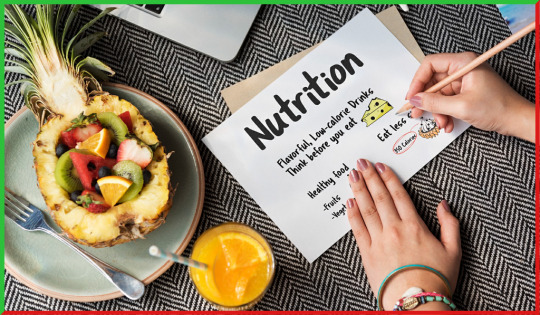
Nutrition is not just important, it is the most important part of achieving our goals, accounting for 75-90% of success. No amount of exercise, techniques, or supplements can outweigh poor nutrition. No matter your goal, you should always start with nutrition before going to the gym.
The good news for those who simply want to lose weight is that you may not even need the gym at all. Nutrition comes down to three things:
How we eat
How much we eat
What we eat
It all matters tremendously.
How We Eat and Its Impact
Let’s start with the first point – how we eat and what impact that has. I want to introduce you to the sacred cow for anyone who cares about their physique and health. Remember this, without which no goal can be achieved, from the simplest goal of losing weight over the summer to the most complex goal of building an impressive physique for competition.
No goal can be achieved without increasing your metabolism. Remember that word, you will encounter very often – metabolism, also known as metabolic rate. This is the sacred cow of all bodybuilders, those trying to lose weight by summer, and just people who want to add vitality and prolong youth.
Our bodies have two constant processes from birth to death:
Anabolic (building up tissue)
Catabolic (breaking down tissue)
The rate at which these processes occur is determined by metabolism. Our hated fat can’t just disappear, dissolve, sweat out, or shake off. It can only be spent for the body’s needs. And the rate at which you will lose weight is determined by your metabolic rate. Likewise, when you build your body, how quickly you gain muscle mass and recover will also depend on that infamous metabolism.
With a low metabolic rate a person typically becomes sleepy, sluggish, and slow. They gain fat, lose it very slowly, and can’t build muscle mass – there is no energy to train. Therefore, for the average person trying to change their physique, the goal is to increase their metabolic rate. The higher it is, the easier it is for us to lose weight. Metabolism slows down with:
Age
Alcohol
Infrequent eating
Skipping breakfast
Eating only 2-3 times per day
Large dinners
What can help accelerate metabolism? How we eat.
Frequent Small Meals

There is no better way to accelerate metabolism than frequent small meals – eating approximately equal-sized portions no less frequently than every 3 hours. When I lost 30 kg (66 lbs) in 4 months, I ate 5-6 times per day. Is this difficult? Does it seem time-consuming? Not at all, it’s very simple. I’ll explain in a future article how you can do this automatically.
For now, I promise time savings and an energy boost by the end of the first week, and if your goal is to lose weight, then weight loss as well. The key is to get the ball rolling so you see that the new life, started properly, pays off immediately and you won’t want to quit it.
Time savings? I know it sounds crazy. But let’s take a stopwatch and calculator and count. At first, you’ll need to eat every 3 hours. How long does it take to eat a small portion? About 4 minutes. If you eat your first meal at 8 am and then every 3 hours until 8 pm, that’s about 5 eating occasions. 20 minutes total. Add another 10 minutes for getting containers back and forth. 30 minutes total.
Now let’s compare that to the standard 3 meals per day when you don’t bring food from home – going downstairs to the cafe, ordering, waiting, paying, eating is already 40 minutes. Plus morning coffee, breakfast, and dinner. Trust me, I have the experience to compare it to. Carrying your own food saves a lot of time.
So to summarize:
The iron rule is to eat every 3 hours. This is how we eat.
It helps accelerate our metabolism.
The higher it is, the easier it is for us to lose weight.
Metabolism slows down with age, alcohol, sedentary lifestyle.
One of the main goals is to increase metabolic rate.
And this is frequent small meals.
However, is it enough for us to just eat candy bars and cake every 3 hours and expect the heavens to smile upon us and we’ll lose weight? Of course not.
Calorie Deficit
Our body expends energy on everything – breathing, working, heart function, body heat, and more. The amount of energy produced is determined by metabolism. By the way, the body really hates calorie deficits. It doesn’t know we live in the 21st century and don’t need to hunt mammoths, which is why it gets fat – just in case of lean times. And as soon as it senses a deficit, it reluctantly tries to tap into reserves. After all, from its perspective, this is a life threat! It tries to reduce calorie expenditure so there is enough. How? Very simply. It tries to reduce metabolic rate. This is very similar to a computer’s energy-saving mode.
Oh, there’s not enough energy we can use? Shut down digestion! Less movement? Let him be sleepy. And so on. It’s very different with frequent small meals. The sensation of hunger is essentially your blood glucose or sugar level. When we constantly provide the furnace with a little fuel, we prevent sugar levels from dropping so low that the body panics and identifies it as a life threat, and switches to energy conservation mode.
So we need to eat every 3 hours to prevent our metabolism from slowing down and keep calories consumed slightly below what the body burns – just slightly. Not too much. Because as soon as we start starving too much, glucose levels will drop, and hello energy conservation mode, goodbye fat burning. This is why you can’t lose weight too quickly.
Let’s summarize:
To lose weight, you need to consume slightly fewer calories than your body burns.
To build muscle, you need to consume more calories than you burn.
This is why it is impossible to simultaneously lose fat and build muscle mass – it has to be one or the other.
The body burns energy. The more the higher the metabolic rate. Blood glucose levels determine if we feel hungry or full and the relative calm of our body. If we tape our mouths shut, nothing good will happen. Glucose levels will drop so low that the body will see it as famine times and immediately slow metabolism to conserve energy. This is why you can’t lose weight infinitely quickly. It seems obvious – we’ll just eat one candy bar or cupcake every 3 hours and we’ll lose weight. Not so fast.
What We Eat

This brings us to the last point – what we eat. Broadly, everything we eat can be seen as:
Proteins – the building blocks
Carbs – our energy stores
Fats – high energy supplemental materials and reserves.
This is the info you see on any food label along with calories – proteins, fats, and carbs. Despite the fact that all foods contain some combination of proteins, fats, and carbs, it’s more than enough for us to focus on the main components.
So what are proteins? Lean meats, chicken breast, turkey, beef, fat-free cottage cheese, egg whites without the yolk, fish.
Carbs are nearly all grains, oats, rice, buckwheat, anything sweet, anything made from flour. And of course, sugar.
Fats are fats – oils, animal and vegetable fats, and lard. That’s the basics.
Carbohydrates and Insulin
So what and how should we eat? Let’s start with the stumbling block – carbs.
We talked about glucose. Aside from determining if we are hungry or not and triggering fat-burning or conservation mode, it directly impacts insulin production. Our body monitors blood sugar levels and as soon as they spike, the pancreas starts pumping out insulin to store the excess blood sugar as fat. Additionally, insulin prevents tapping into existing fat stores for energy.
Why do our sugar levels spike instantly? Sweets. All carbs can be loosely categorized as simple or complex, with a high or low glycemic index. All simple carbs cause a blood sugar spike, insulin release, and fat storage – as well as blocking existing fat from being used. Which essentially stops any fat loss in its tracks. The conclusion is obvious – nothing good comes from sweets and flour products. Even a small candy bar can halt fat loss for a long time.
To summarize:
Simple carbs with a high glycemic index are in sweet and floury foods.
If you are trying to lose weight you need to eliminate them.
What about grains and pasta? You need to eat them, by no means cut them out entirely, because they are where the body gets energy and glucose. And as soon as glucose levels drop too low, metabolism will slow. The only difference is when you eat them. Nature is such that all metabolic processes slow down at night – slower pulse, slower breathing. We don’t need to move much. Therefore, if you eat carbs at night, they will keep your blood sugar levels high all night long.
Which again interferes with fat burning. If glucose levels drop at night, it does no harm since nighttime metabolism slows anyway. The conclusion – you need to consume your required carbs approximately 3 hours before bedtime.
Proteins and Fats
What about proteins and fats? Proteins are our building blocks. If you are not training, I don’t recommend eating more than 1.5 grams per kg of body weight. Fats are simpler. We need some fat, but not too much. We need about 0.5 grams of polyunsaturated fats per kg of body weight – fats containing omega-3 and omega-6 fatty acids. Fish oils, flaxseed oil. We need these for proper endocrine system function, and hair and nail health. We cut out animal fats – lard and butter.
The only remaining questions are about fiber and water consumption. You can and should drink plenty of water. But make sure it’s actual water without sugars – compotes, juices, tea, and coffee don’t count.
Fiber, meaning broccoli, cauliflower, etc, is very beneficial. It increases intestinal peristalsis and helps cleanse the body.
That’s really all there is to it. Now I’ll briefly tell you how I lost around 50 lbs (23 kg) in 4 months before I started going to the gym and building my body from scratch.
My Personal Experience

Eating every 3 hours is ironclad.
I cut out all sweets except for one cheat meal per week where I would replace one meal with something sweet.
Due to being busy, I didn’t count calories precisely – I just ate about 2 cigarette pack-sized portions per meal. That’s not optimal but it worked.
I ate carbs in the first half of the day.
More protein and fiber closer to evening.
No food before bed.
Lean meats, boiled.
Difficult? No.
Anything new? No.
I will tell you about my training and diet. But success lies outside of just advice at the level of “tell me what to eat and what to lift”. These things have been known for ages. There are no new methods, especially for beginners.
I anticipate you will have many questions and doubts – come on, this can’t be true, I heard otherwise, my friend says, etc. And that’s why before I continue with specifics like calculating calories, organizing 5 daily meals, or home ab workouts, I need to spend some time debunking myths and uncovering why the industry of miracle cures thrives. Information is intentionally distorted to throw us off track.
For now, your assignment is to start eating every 3 hours. You need to make this a habit. Don’t worry about calories or macros yet. Just take your normal diet but break it up throughout the day. Most importantly, keep reading my articles and you’ll see no special diets are needed. You have all the willpower you need, I promise, and your quality of life will only improve.
Any discomfort will be temporary and not too serious because a little discomfort is always part of life. I have to explain this before I start giving recipes.
So subscribe, like, share with friends, and comment. It’s always more fun together. Looking forward to your feedback and questions. Bye for now!
#diet#healthyeating#slimmingworld#nutrition#healthyfood#healthyliving#loseweight#fatburn#burningcalories
2 notes
·
View notes
Text
When is the Best Time to Weigh Yourself?
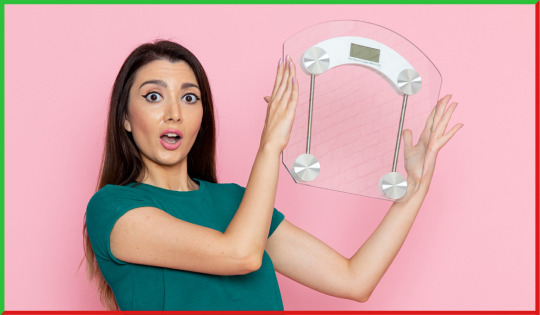
Hello everyone, my friends! Today I will briefly answer what seems like a simple question from one of my subscribers: when is the best time to weigh yourself?
Constant Weighing is a Mistake
Even though constantly weighing yourself and looking at the scale is one of the biggest mistakes when losing weight, which I have talked about in previous articles, this mistake hinders people who want to change their appearance or life.
The question itself – when is the best time to weigh yourself to get the most realistic data about your weight – is valid. This is because your weight often fluctuates at different times of the day. This makes sense – at night we don’t eat, the body only spends energy. But during the day we eat, drink, walk, run, and also burn calories.
The Difference Between Morning and Evening Weight
The question is not that our weight is different in the morning and evening. The question is how different? Very often it happens that people try to get rid of excess fat, when in fact the problem is not excess fat but swelling.
Swelling can be very different. The question is how to determine if the difference between morning and evening weight is swelling or something else. You can accurately diagnose swelling indirectly, which I will talk about in an upcoming article, or you can consult a doctor.
But the first sign that you have swelling is the difference between morning and evening weight on the scale. If this difference exceeds 1% of your morning weight, it is likely swelling.
For example, if I weigh 104 kg in the morning, my evening weight is typically only 500-700 grams more. But if you weigh 70-80 kg in the morning and suddenly find you weigh 83-84 kg in the evening, this is classic swelling. Of course, it’s impossible to gain that much fat in a day.
To gain 1 kg of fat, you would have to consume 9,000 excess calories in a day, which is unrealistic. So this weight gain is likely water and swelling, not fat.
What to Do About Swelling
In upcoming articles, I will talk about what to do about swelling. Briefly, read my article about salt – an imbalance of electrolytes and fluids often causes swelling. Fixing this takes time but can resolve swelling without medical intervention unless you have an underlying condition.
Conclusion
To summarize – weigh yourself in the morning on an empty stomach after using the bathroom. This will give you the most realistic weight. If your evening weight fluctuates more than 1% from your morning weight, you likely have swelling. Read my article on salt, balance your hydration and electrolytes over the next couple of weeks, and the swelling should resolve.
That’s all for today, goodbye for now!
#diet#healthyeating#slimmingworld#nutrition#healthyfood#healthyliving#loseweight#fatburn#burningcalories
1 note
·
View note
Text
Insulin Index and Glycemic Index

Hello, my friends! Today, I’ll be addressing a frequently asked question that has been circulating lately: What exactly is the insulin index? The topic might be a bit complex, or rather, lengthy, but for those of you who have recently started following my articles or those who wish to refresh their memory, I’ll take it slow, provide detailed explanations, and refer back to my previous works because they’ll be quite handy here. So, please forgive me for being a bit meticulous. Now, to comprehend what to do with this insulin index, we must first recall the essence of insulin itself.
Understanding the Role of Insulin
Insulin is one of our primary anabolic hormones. In other words, it aids in muscle building and protects our muscles from breakdown. On one hand, we need insulin; it is essential for our bodily functions. However, on the other hand, it can also be a significant hindrance because, in addition to its other functions, it signals the body to store fat and interferes with our fat-burning process.
So, if our goal is to get lean, achieve a chiseled appearance, and minimize excess body fat, we must strive to keep insulin levels under control. That’s the crux of it. As I’ve mentioned before, I highly recommend reading my comprehensive article on this topic. But for now, let me briefly recap what insulin is all about.
The Concept of Glycemic Index
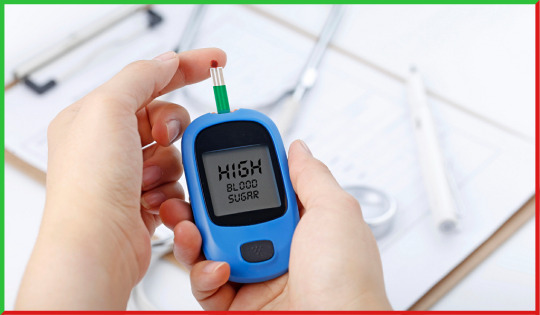
Back in the day, during the study of diabetes, which is essentially a disorder of the pancreas, responsible for secreting insulin in our bodies, the concept of the glycemic index was introduced. The glycemic index measures the speed and amount of glucose or sugar released into the blood after consuming certain foods. Got it? So, the glycemic index is heavily connected to blood sugar or glucose levels in our system. Now, since one of insulin’s primary tasks is to transport glucose, leading to a reduction in blood sugar, it’s quite logical to assume that the higher our blood sugar levels, the more insulin our body produces to process and lower it.
That’s why you always hear the advice to avoid high glycemic index foods if you want to lose weight, maintain a healthy body mass, keep your pancreas in check, and steer clear of diabetes. These high glycemic index foods cause a rapid spike in blood glucose levels, and consequently, there’s a significant surge in insulin production, which is not helpful.
The Enigma of Carb-Free Foods
So, it seems like everything is clear with this issue. However, there’s one aspect to consider. We have certain products that contain carbohydrates, and in those cases, it’s easy to understand that if they have a high glycemic index, they lead to a significant increase in insulin levels, which is not ideal. But there are also products that don’t contain carbohydrates at all, meaning they don’t cause a rise in blood sugar. You probably remember that carbohydrate-containing products are the ones that give us energy, providing glucose in the blood. It’s these products that trigger the pancreas to produce insulin.
Now, here’s the thing: some products have almost no carbohydrates or very few of them, yet they still lead to a considerable release of insulin. And again, this is not desirable. So, what are these products, and how can we identify them?
Introducing the Insulin Index
Here’s the idea: researchers conducted a study and introduced the concept of the insulin index. The glycemic index compares the blood sugar levels after consuming certain foods to the levels after consuming glucose (which is set as the standard at 100 units). On the other hand, the insulin index measures the insulin levels in the blood after eating specific foods. So, there’s a difference between the two.
Now, when it comes to certain products, like dairy items such as cottage cheese and others, they typically have a low glycemic index, meaning they don’t contain many carbohydrates. However, surprisingly, they have a high insulin index, indicating that they lead to a significant insulin response in the body. So, the insulin response is directly related to the consumption of these products.
So, my friends, now the question remains: should we be concerned about this increase in insulin levels caused by certain foods? Is it something to fear? Let’s try to figure this out. I recommend reading an article that specifically focuses on studying this insulin response to cottage cheese.
Unraveling the Complexities of the Insulin Response
The Curious Case of Reactive Hypoglycemia
Now, let’s dive into a slightly more intricate topic related to insulin response. To better understand this phenomenon, I personally constructed a graph that demonstrates the variations in blood sugar levels after consuming pure glucose, which serves as the standard reference.
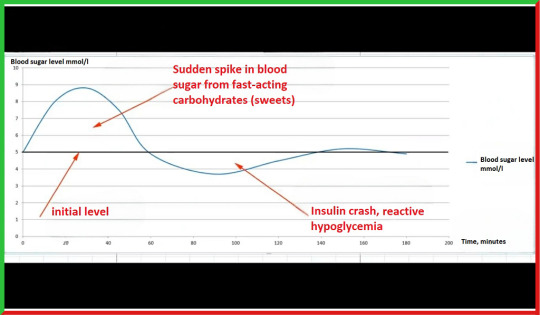
The graph illustrates the typical patterns associated with fast-acting carbohydrates. Of particular interest is the phase known as reactive hypoglycemia.
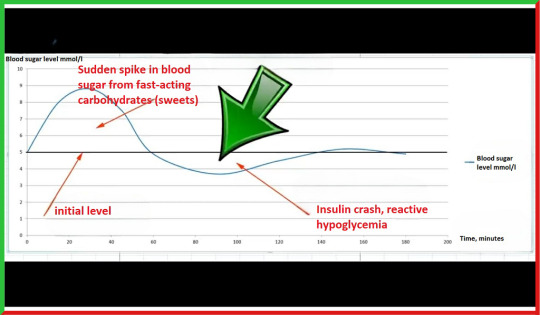
But what exactly is reactive hypoglycemia? When you consume something sweet, your body isn’t aware of the exact amount of carbohydrates you’ve ingested, so it produces an excess of insulin just to be safe. As a result, when blood sugar levels stabilize, the remaining insulin pushes the sugar even lower than before. However, the body dislikes both spikes and drops in blood sugar levels. Why? Well, if you’re familiar with diabetes, unfortunately, patients often succumb not to high blood sugar levels but rather to low ones. Excessive insulin, if miscalculated, can lead to critically low blood sugar levels incompatible with life. Individuals might fall into a state of hypoglycemic coma and ultimately perish.
To prevent such occurrences in nature, we have the hormone glucagon. Glucagon comes into play when there’s a critical drop in blood sugar levels. It prompts the liver to release glucose from its glycogen reserves into the bloodstream, thanks to the action of this hormone. Consequently, despite not consuming more carbohydrates, as demonstrated on the graph, our blood sugar levels gradually return to normal.
The Role of Glucagon and Cottage Cheese
The same process occurs when we consume cottage cheese. Interestingly, cottage cheese is a product with a very high insulin index. So, I decided to put it to the test.

To my surprise, there was no reactive hypoglycemia in sight, even though I had consumed an entire 200-gram pack of cottage cheese.
What does this reveal? It tells us that the amount of insulin produced in response to consuming that pack of cottage cheese lowered blood sugar levels. Then, the liver promptly acted via glucagon, producing glucose to meet the insulin’s demand, which was efficiently transported to either fat tissues or cells, depending on my body’s needs at the time. However, when comparing the effect of an entire pack of cottage cheese to the impact of 30 grams of glucose, as depicted on the graph, it’s like day and night.
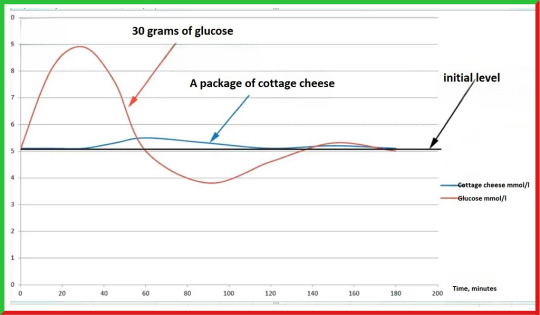
The Impact of Glucagon and Cottage Cheese on Insulin Response
The Limits of Glucagon’s Power
Now, let’s explore a thought that arises from the previous insights. I couldn’t help but wonder if the excessive amount of glucagon in my liver contributed to the lack of reactive hypoglycemia after consuming an entire pack of cottage cheese. If that were the case, why doesn’t glucagon have enough power to handle the reactive hypoglycemia phase after ingesting just 30 grams of glucose? After all, 50 grams of sugar—perhaps in the form of a piece of cake or a sweet treat—isn’t that substantial.
The explanation lies in the fact that glycogen stored in the liver, facilitated by glucagon, has its limitations in terms of speed. Otherwise, we wouldn’t witness the reactive hypoglycemia phase in response to insulin produced from just 30 grams of glucose. Additionally, diabetics wouldn’t face life-threatening situations due to insulin dosage mishaps, as glucagon would swiftly replenish the insufficient blood sugar levels. However, this isn’t the reality. We observe the reactive hypoglycemia phase, and diabetics often experience lethal consequences under certain circumstances.
Understanding the Relevance of Fat Loss
Now, let’s relate these findings to our goals of fat loss and body composition. For individuals merely seeking to shed some excess weight and not preparing for bodybuilding competitions, consuming cottage cheese will likely have a negligible impact on their weight loss journey.
Yes, insulin will be produced—something I’ve discussed in my articles focused on overcoming plateaus and shedding the last few kilograms that just won’t budge. As your body fat decreases, insulin sensitivity increases, meaning less insulin is required to halt your fat-burning process. If you have 20 to 30 kilograms of excess weight to lose, if you’re in the early stages of your weight loss journey, and if you haven’t yet seen your abdominal muscles, then trust me, consuming a pack of cottage cheese won’t have any significant effect.
Sure, it will lead to insulin production, but your tissues’ insulin sensitivity isn’t high enough at this point to halt your weight loss progress. Panicking or overreacting because you consumed a product with a high insulin index at this stage is unnecessary.
It’s a completely different story for competitive athletes who aim to drop from 10% body fat to 5% for competitions. For these individuals, a pack of cottage cheese will undoubtedly interfere with their goals. However, you and I are not competitive athletes. We’re not stepping onto any stages. We don’t need to. Let’s review the graph once more. I showed you the blood sugar level increase after consuming 30 grams of glucose. It only took 30 grams for me to witness the complete graph with the dip into reactive hypoglycemia and its associated consequences.

Therefore, even 30 grams of pure glucose are a lot for the body to handle. It’s evident from the blood sugar level response. Accordingly, the insulin production was significant, so much so that even the liver couldn’t cope with the reactive hypoglycemia phase. In contrast, a whole pack of cottage cheese didn’t come close to inducing such a response.
Calculating the Insulin Index
So, here’s how the insulin index is calculated. Instead of measuring the weight of the food, it considers the quantity of the food that contains 240 kilocalories.
Do you see the difference? While the glycemic index was based on the body’s reaction to 30 grams of glucose (set at 100 units), the insulin index is calculated based on the quantity of white bread that provides 240 kilocalories.

In the photograph, you can see that I went to the store out of curiosity, and bought half a loaf—almost five slices—or around 100 grams, which happens to be approximately 240 kilocalories. Now, tell me, can you imagine how consuming such an amount of bread in one go would affect your weight loss? Certainly, even when I’m not trying to lose weight, I wouldn’t eat this much bread at once because it would almost guarantee an accumulation of fat around my waist. This is the standard for an insulin index of 100 units.
Let’s consider eggs as another example. Their insulin index is around 30. Now, imagine the amount of eggs you’d need to consume to reach 240 kilocalories of eggs.
I did the math, and you can see the result:
– 5 eggs = 240 kcal
– Insulin Index = 30
– Thus, 5 eggs is approximately equivalent to 20 grams of bread.
Moreover, keep in mind that if you consume this quantity of eggs in one go, your body will produce approximately three times less insulin compared to consuming those five slices of bread. Is that a lot? Not really, especially considering that nobody eats that much at once. A very common question is whether consuming BCAAs (branched-chain amino acids) leads to insulin production. Yes, it does. Is it something to be afraid of? No, not at all. Let’s calculate the calorie content in 100 grams of BCAAs:
– BCAAs = 400 kcal / 100 grams
– 240 kcal = 60 grams of BCAAs
In other words, to consume 240 kilocalories, you would need to ingest this amount of BCAAs in one go. However, does anyone actually take such a large dose of BCAAs at once? No, they typically take 5, 10, or 20 grams, but certainly not 60 grams. Therefore, for starters, this approach is cost-prohibitive.
To eat the equivalent of five slices of bread, you would have to consume half a jar of BCAAs at once. Thus, while insulin is produced when consuming BCAAs, it is not in such quantities that it would significantly impact your weight loss.
Recap: Understanding the Insulin Index
So, my friends, let’s quickly recap what we discussed today—although it may have been a bit tedious. The insulin index is a measure that indicates the amount of insulin produced when consuming different foods. In contrast, the glycemic index reveals how much sugar or glucose will be released into the bloodstream after consuming certain foods. There’s a significant difference between the two.
For a 100% insulin index, we use the quantity of a product (white bread) that contains 240 kilocalories of energy. When we consume products that have no carbohydrates, the insulin levels decrease due to its production being compensated by the hormone glucagon, which prompts the liver to adjust the blood glucose levels.
Without this mechanism, the blood sugar level would drop dramatically, potentially leading to a hypoglycemic coma and death. Unfortunately, that’s often how diabetics die if they miscalculate their insulin dosage. However, our bodies have the capacity, thanks to glucagon and liver glycogen stores, to handle situations when products with high insulin index are consumed. Although insulin is produced in such cases, it is not in quantities that could hinder weight loss for the average person.

If we compare the insulin response to consuming a whole pack of cottage cheese, which has one of the highest insulin indexes, to the response from 30 grams of glucose, we can see that it’s not even close. After 30 grams of glucose, glucagon is unable to cope with the reactive hypoglycemia phase, as it lacks speed and power. However, when eating a whole pack of cottage cheese—200 grams of it, in my case—our bodies handle it without any issues. We don’t witness any insulin spikes or blood sugar crashes. This means that although insulin might be produced, it’s not in such quantities that it could hinder weight loss for an ordinary person.
So, if you’re just an average individual, not preparing for competitions or seeking to drop those last percentages of body fat (as sensitivity to insulin is highest at that stage), you don’t need to worry about foods with high insulin indexes. I believe you can eat them normally, just avoiding fast-digesting carbohydrates, which, as the graph shows, readily contribute to fat storage.
Now, let’s address the issue of whether we should be afraid of BCAAs. The answer is no, we shouldn’t be. While BCAAs do induce insulin production, it’s not in quantities that would significantly impact weight loss.
In conclusion, my advice regarding insulin indexes is not to worry about them until you reach around 10-12% body fat. Until then, you can eat normally. Just avoid consuming fast-digesting carbohydrates, which, as the graph indicates, contribute to fat storage. This advice aligns with my practical experience, as the majority of my successful clients who have achieved fantastic weight loss results consume products with high insulin indexes, including cottage cheese, without worrying about this aspect. When it comes to cutting and preparing for competitions, naturally, dairy products are avoided.
That’s all for today.
Goodbye, everyone.
#diet#healthyeating#slimmingworld#nutrition#healthyfood#healthyliving#loseweight#fatburn#burningcalories
1 note
·
View note
Text
The Cottage Cheese and Weight Loss. My Personal Experiment

Hey there! Today, I want to delve into a controversial question: Is cottage cheese suitable for weight loss? Should you include it in your diet? In just a few words, let me remind you why cottage cheese sparks so much debate. Those who care about their appearance often worry about the hormone insulin because it promotes fat storage and halts the process of burning existing fat. Any food you consume triggers the release of insulin, and the less insulin produced, the better it is for weight management.
Carbohydrates found in foods contribute to the highest insulin response, and the higher the so-called glycemic index, the worse it is for weight loss. Hence, avoiding sugary and starchy foods in favor of whole grains like buckwheat or oats is recommended. However, there are some products with almost no carbohydrates that still trigger insulin production. These are foods with a high insulinemic, rather than glycemic, index.
One such food is cottage cheese. Some theories claim that cottage cheese provokes a very high insulin response, almost on par with sugar or chocolates, thus advising people to avoid it. But, as always, if possible, I like to test these claims myself. Along the way, I’ll explain how you can conduct a similar experiment if you wish. For this test, you’ll need a blood sugar monitoring device, commonly known as a glucometer. This device is affordable and easy to find.
Conducting the Experiment
First and foremost, let’s make sure we have all the necessary tools for the experiment. You’ll need the following:
1. A glucometer (pictured below)
2. A couple of morning hours free of food consumption
3. A pack of fat-free cottage cheese
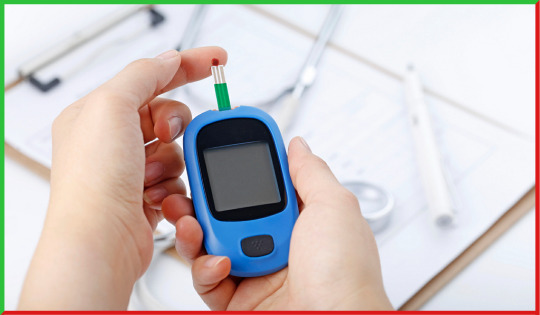
Measuring Blood Sugar Levels
To get accurate results, all measurements should be taken in a fasting state. In the morning, about eight hours after your last meal and after waking up, your blood sugar levels should be stable, free from any influence of other foods. Let’s start by measuring your blood sugar level before consuming cottage cheese. This will give us a baseline value.
The Insulin Connection
Now, rapidly consume the pack of cottage cheese, start the timer, and begin taking blood sugar measurements. For the first hour, measure it every 15 minutes, and after that, every 30 minutes. I know you might wonder why we’re measuring blood sugar when our main interest lies in insulin levels. This is merely a workaround because analyzing insulin directly would require inconvenient and costly laboratory testing. Nevertheless, blood sugar and insulin are closely connected. Insulin always lowers blood sugar or glucose levels in the bloodstream; it’s its primary function. By observing blood sugar behavior, we can infer insulin production.
Analyzing the Results
Let’s take a look at the graph. As you can see, cottage cheese contains almost no carbohydrates, meaning it won’t cause the rapid spike in blood sugar you would get from consuming candies or pastries.
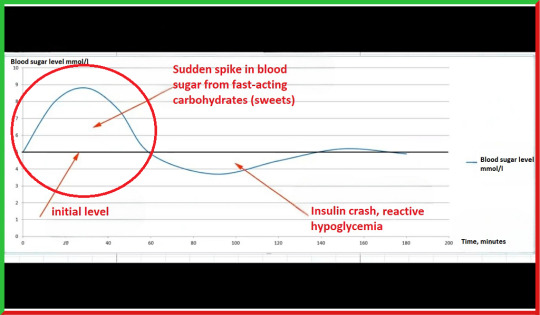
However, if the theory is correct and despite the lack of carbs, the pancreas still secretes insulin as if you consumed something sweet, we should witness a sharp drop in blood glucose levels compared to our initial reading. This would indicate reactive hypoglycemia, where blood sugar drops below normal levels.

The Experiment Results
So, I started measuring and recording all the readings. Now, I present to you the resulting graph showing the changes in blood sugar levels after consuming cottage cheese.

As you can see, unfortunately, there was no significant drop in blood sugar levels after consuming cottage cheese. This indicates that my pancreas did not produce large amounts of insulin in response to the cottage cheese intake. Consequently, it means that consuming cottage cheese alone will not hinder the fat-burning process, specifically the initial stage of lipolysis. Now, let me show you the graph comparing the reaction to cottage cheese with the reaction to 30 grams of glucose.
Here’s the graph comparing the blood sugar levels after consuming cottage cheese and after consuming glucose.

I conducted these tests in the morning, on an empty stomach, using the same method and equipment. As you can see, there are no significant drops that could occur if insulin were being produced in response to something sweet. Therefore, my conclusion is that cottage cheese does not affect the production of insulin in large quantities and can be used during the fat-burning process.
The Water Retention Mystery
Now, we’re left with an open question – why does cottage cheese sometimes cause water retention? As I’ve just confirmed, the culprit behind this water retention is not insulin; therefore, there must be another reason. Indeed, water retention exists, as many athletes among my friends and acquaintances have noticed. However, this water retention is mainly relevant to those participating in bodybuilding competitions. Let me explain.
During specific stages of competitive preparation, athletes manipulate water intake and salt, which contains sodium, to achieve the most defined physique possible. Cottage cheese contains sodium, and in the context of reduced salt intake, the body tends to absorb sodium actively, leading to water retention. Hence, during the pre-competition phase, some athletes might experience water retention after consuming cottage cheese. But, as I mentioned before, this doesn’t concern the general public or beginners in fitness. Therefore, for most people, this is a non-issue.
Conclusion

In conclusion, my experiment clearly shows that cottage cheese does not trigger a significant insulin response that could hinder the fat-burning process. It can be safely incorporated into your weight loss journey. Remember, it’s essential to focus on a balanced diet and overall caloric intake to achieve your desired results.
So, until next time, keep experimenting, stay informed, and let’s continue our journey to a healthier lifestyle! Goodbye for now.
#diet#healthyeating#slimmingworld#nutrition#healthyfood#healthyliving#loseweight#fatburn#burningcalories
1 note
·
View note
Text
Smoking and Weight Loss. Nicotine’s Impact on Body Weight

Hey, everyone! Today, we are going to delve into the topic of whether quitting smoking can lead to weight gain. The relationship between smoking and excess weight has always been a subject of debate. Many individuals fear giving up this harmful habit because they worry about gaining extra pounds. On the other hand, some believe, after reading popular author Allen Carr, that smoking and weight gain have no connection at all. So, whom should you believe? And what should you do if you are already a smoker?
First, let’s explore how smoking affects our body weight.
The Factors at Play. Nicotine and Psychological Habit

The issue of excess weight involves two factors: nicotine as a chemical substance, and the habit of smoking as a psychological factor. In this article, I emphasized the importance of metabolism or the rate of metabolism in the process of changing one’s appearance. If you haven’t read it yet, I recommend checking it out, but for now, let me briefly remind you that a high metabolic rate is crucial for successful weight loss.
Now, I won’t sugarcoat it—the truth is that nicotine does contribute to an increased metabolic rate. However, this does not mean you should rush to start smoking to lose weight. There are other ways to boost your metabolism without harming your health and your wallet, and I discussed those in this article. For now, let’s focus on those who currently smoke.
The Influence of Nicotine on Metabolism. Smoking and Weight Loss
So, let’s talk about the impact of nicotine on metabolism. Firstly, nicotine accelerates the metabolism—that’s one aspect. Additionally, it stimulates the production of adrenaline, which is one of the hormones responsible for lipolysis or the breakdown of fats, leading to fat burning. Moreover, nicotine stimulates the functioning of the intestines and esophagus, which further helps prevent weight gain. Contrary to the common myth that cigarettes have a calming effect, nicotine actually excites the central nervous system. Furthermore, nicotine dulls the taste receptors and reduces appetite. All of these combined contribute to smokers gaining less weight.
Now, what happens when you decide to quit smoking?
The Impact of Nicotine Withdrawal on Weight

Nicotine deeply embeds itself into our metabolic system, and it takes time to adjust once you quit smoking. Initially, your metabolism slows down, your appetite increases, the central nervous system becomes less excited, and your heart rate decreases. All of these factors contribute to weight gain, and this is just the impact of nicotine as a chemical substance.
In addition to the physiological changes, quitting smoking often leads to stress for many individuals. This stress is commonly relieved through eating, especially indulging in sugary treats, chips, and snacks, all of which add to your daily calorie intake. Furthermore, the taste receptors, which were previously dulled by nicotine, start working again, providing more taste sensations from food, leading to overeating.
Honesty is essential here—I won’t sugarcoat it. Quitting smoking can lead to weight gain. Of course, there is a chance that you can manage your weight by reducing calorie intake and resisting the temptation to indulge in comfort eating, but in practice, I have not encountered many cases where individuals didn’t gain some weight after quitting. Personally, when I quit smoking, I used to smoke 1.5 packs of cigarettes a day, and despite closely monitoring my diet, I gained about 12 kg of fat over six months. Similarly, most of my acquaintances who quit smoking experienced weight gain.
What’s the Sequence of Actions?

So, what can you do if you want to lose weight and quit smoking? Here’s the recommended approach:
1. If you currently smoke and want to lose weight—DON’T QUIT smoking right away. Instead, start by changing your eating habits and make this a routine to initiate your weight loss journey.
2. Once you have successfully adapted to a healthier eating pattern and experienced some weight loss, then you can confidently quit smoking.
3. It’s likely that you might gain some weight after quitting, but by this point, you will already know how to deal with it and that it’s not an insurmountable challenge. You’ll be aware that the weight gain will be modest and temporary. Knowing this in advance will safeguard your nerves from stress and prevent you from abandoning the newly embraced healthier lifestyle. Trust me, it’s possible.
I’m eager to hear your experiences—how did you quit smoking, and did you gain weight initially?
Conclusion

In conclusion, the relationship between smoking and weight loss is complex. Nicotine does play a role in accelerating metabolism and suppressing appetite, which can lead to smokers gaining less weight than expected. However, once you quit smoking, there will be some temporary physiological and psychological adjustments that might contribute to weight gain.
The key to success lies in a well-thought-out approach. If you want to lose weight and quit smoking, consider starting with dietary changes first, building healthy habits, and then, when you’re confident in managing your weight, embark on the journey to quit smoking. Knowing how to handle any weight gain during the process will give you the confidence to persevere.
Remember, a healthier and happier life is within your reach. Stay tuned for more insightful articles on my blog
1 note
·
View note
Text
How to lose weight? What are the obstacles to weight loss?

The Pitfall of Constantly Seeking Immediate Results
Greetings, everyone! Today, I want to address one of the most common mistakes people make when trying to transform their bodies and embark on a new life journey. Picture this: you spend 30 minutes in front of a good mirror, under favorable lighting conditions, without blinking once, and you intensely focus on your hair. Let me ask you a question: do you notice your hair growing? Can you witness your hair lengthening right before your eyes? Of course not.
So, here’s the analogy: imagine capturing a photo of yourself today and then approaching the mirror again after six months. Do you think you would notice any difference? Would you see your hair has grown? Oh, wait, you might think it’s time for an urgent visit to the hairdresser.
But here’s the point: the first and fundamental mistake made by those who embark on a weight loss journey is constantly and obsessively trying to see immediate results. It’s akin to a person who accidentally shaved their head and eagerly stares into the mirror, hoping to witness their hair miraculously growing back. So, why do we act this way regarding weight loss? There’s only one reason: hair grows independently, and deep down, you know it will grow regardless.
The Weight Loss Insecurity Loop. Endless Fixation and Self-Torment
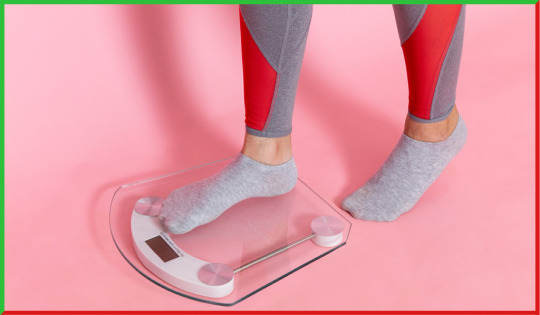
Weight loss is often accompanied by feelings of insecurity. What if it doesn’t work out? What if…? These doubts lead us to fixate on the process, turning our lives into an agonizing ordeal. Constantly questioning ourselves, we impatiently wonder, “When will my belly disappear?” My dear friends, this approach won’t work. After all, the sole purpose of improving our appearance is to derive more pleasure from life. However, fixating on this pursuit transforms our lives into a living hell.
Furthermore, daily weight fluctuations are common and do not necessarily indicate weight gain. Yet, worrying about these fluctuations can lead to a spiral of self-sabotage, causing you to indulge in unhealthy food out of frustration. Moreover, excessive anxiety triggers the release of cortisol, which impedes fat burning. To break free from this cycle, a little practice is required.
Practical Steps for Mindful Weight Loss. Embrace the Journey
Firstly, you now know what not to do. Recognize when you fall into the fixation trap and catch yourself in the act. Secondly, never treat body transformation as a project with a set deadline. Avoid targeting weight loss specifically for a wedding, a vacation, or the summer season. Thirdly, steer clear of restrictive diets. Firstly, diets always entail temporary changes in eating patterns, meaning they have a fixed timeframe. Secondly, weight tends to return after any diet. If you’re skeptical, please take the time to read this article I recommend.
Fourthly, remember that our results are always a consequence of the process. A beautiful body is a fact, but achieving it is a process. Similarly, an esteemed lifestyle is a process. Obesity is a process, a constant one that often goes unnoticed. However, when we struggle to fit into our favorite shorts during the summer, it becomes a fact. Aging is a process, and becoming an elderly person is a fact.
The Power of Trust and Belief. Have Confidence in Your Actions

Finally, the most crucial aspect is to trust in what you are doing. There should be no room for doubt, no “what if” or “maybe.” When it comes to lifestyle and nutrition choices, which I extensively discuss in my articles, I have never encountered a single case where someone followed all the guidelines and failed to lose weight. Not a single one. By the way, for those of you reading my article for the first time, you can find comprehensive information on guaranteed weight loss in these two articles:
Your Path to Weight Loss: Portion Control
Healthy eating. How to lose weight
Conclusion
Well, I hope you found this article valuable. Feel free to share it with your friends and leave your comments below. That’s all for today. Stay beautiful and healthy. Goodbye, everyone!
#diet#healthyeating#nutrition#slimmingworld#healthyfood#healthyliving#loseweight#fatburn#burningcalories
1 note
·
View note
Text
Master your Willpower : Strategies Success
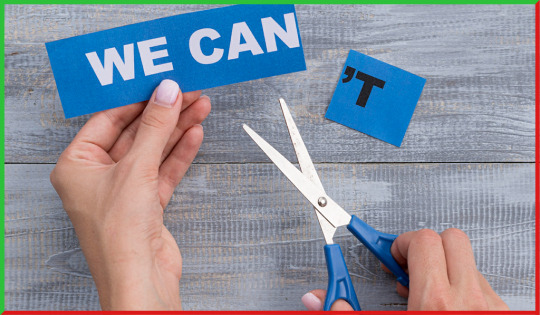
The concept of willpower holds a special place in our society. Those who possess it are respected and admired, often serving as examples to others. Countless movies have been made, highlighting the heroic struggle of individuals with iron wills. It seems that nearly everyone dreams of having such unwavering determination, especially when it comes to weight loss or hitting the gym. Today, we will uncover a secret: each and every one of us already possesses the power of will. The key lies in knowing when to use it and when not to. Join us as we delve into the topic of willpower.
The Time Investment
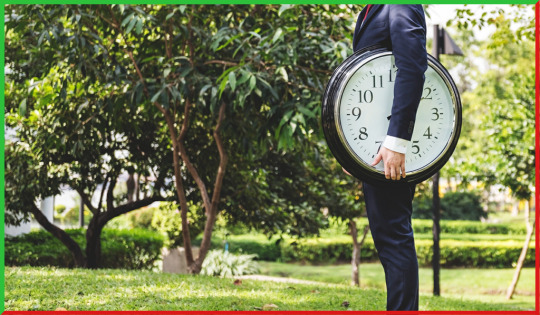
Curious about the exact amount of willpower required to achieve remarkable results? The answer might surprise you. In my case, it amounted to just six minutes every week, sustained over a period of three and a half years. To put it in perspective, that’s a mere two minutes during an hour-long workout. Yes, just two short minutes when I truly needed to tap into my willpower, contorting my face in determination.
The rest of the time, I breathe, lift weights as my strength permits, jot down notes, go home, spend time with my family, and attend to daily tasks. Trust me, each and every one of you can spare six minutes a week for such a remarkable transformation through willpower. After all, you have tackled tasks that were more demanding and taxing in the past.
The Greatest Deception
There exists a prevalent belief, largely perpetuated by Hollywood, that sticking to a diet, eating healthily, avoiding excessive drinking, and going to bed on time all require unwavering willpower. This is false! While all these factors, including exercise, are crucial for achieving results, they are not synonymous with willpower. They are simply part of a lifestyle—and encompassing 24/7 commitment, 365 days a year. The advice to rely solely on willpower while changing your lifestyle implies that every single second of your life must be endured, suffering through every fleeting moment.
No normal person would willingly subject themselves to such a life, as it simply isn’t desirable or sustainable. Only a psychologically unhealthy individual could endure such a lifestyle, and they are a rarity. Willpower is not the appropriate tool for such circumstances. It’s like attempting to drive a nail with a saw—it’s ineffective. No one can hang from a pull-up bar indefinitely without succumbing to fatigue. It’s unnecessary and impossible. Therefore, remember Rule #1: Willpower is suitable for short bursts of effort, characterized by tension and subsequent relaxation. It cannot change your life.
The Path to Transformation

If willpower alone isn’t the answer, then what is? To truly change your life in a way that brings joy and fulfillment, rather than enduring constant struggle and setbacks, different tools and methods are required. You will discover them by subscribing to the newsletter on the website upanddownsides.com in the “Weight Loss” category. Additionally, you will find valuable information about nutrition, training, diets, and much more, along with free consultations. Don’t forget to share this article with your friends!
Conclusion
In conclusion, willpower is an incredible asset for short-term efforts, but it should not be relied upon as the sole means to achieve lasting transformation. The belief that a strict diet, healthy eating, abstaining from indulgences, and adhering to a strict sleep schedule necessitate unwavering willpower is not entirely accurate. While willpower can be a valuable asset for short-term efforts, it should not be solely relied upon to achieve lasting transformation. Attempting to rely solely on willpower for long-term lifestyle changes can lead to frustration, burnout, and ultimately, failure.
Willpower is a finite resource that can be depleted over time, especially when constantly tested and challenged. It’s unrealistic to expect ourselves to constantly resist temptations and make perfect choices without any slip-ups. The truth is, maintaining a strict diet, practicing healthy eating habits, abstaining from indulgences, and adhering to a strict sleep schedule requires more than just willpower.
To achieve lasting transformation, it’s essential to adopt a holistic approach that encompasses various strategies and techniques. Here are some key elements to consider:
Create a supportive environment
Surround yourself with people who share similar goals and provide encouragement. Modify your physical surroundings to make healthy choices more accessible and tempting options less available.
Set achievable goals
Break your larger goals into smaller, attainable milestones. Celebrate each success along the way, which will provide motivation and reinforce positive habits.
Develop healthy habits
Focus on establishing sustainable habits rather than relying solely on willpower. Gradually incorporate healthier eating patterns, regular exercise, and adequate sleep into your routine.
Plan and prepare
Take the time to plan your meals, schedule workouts, and organize your environment to minimize decision fatigue and make it easier to stick to your goals.
Seek support
Engage with a support system that can provide guidance, accountability, and motivation. This can be in the form of a coach, mentor, or a community of like-minded individuals.
Practice self-compassion
Acknowledge that setbacks and slip-ups are part of the journey. Instead of being overly critical, learn from these experiences and use them as opportunities for growth.
Remember, lasting transformation is a process that requires dedication, patience, and a multifaceted approach. While willpower plays a role, it should be complemented by other strategies and techniques to create sustainable lifestyle changes. By embracing these principles, you can achieve your goals and maintain a healthier and happier life in the long run.
2 notes
·
View notes
Text
Unleash BCAAs’ Power : Fuel Success in Sports Nutrition

Unraveling the Benefits of Branched-Chain Amino Acids
Amino acids with branched side chains, commonly known as BCAAs, have gained significant attention in the realm of sports nutrition. These essential building blocks of protein play a crucial role in muscle composition and function. In this article, we will delve into the unique properties of BCAAs and explore why they have become a popular dietary supplement among athletes and fitness enthusiasts.
The Importance of Amino Acids in Muscle Formation
Our muscles are predominantly comprised of proteins, which, in turn, consist of a combination of twenty different amino acids. Among these amino acids, nine are classified as essential, meaning that our bodies cannot synthesize them and they must be obtained from external sources, primarily through our diet.
However, it is worth noting that three amino acids hold a special place among the essential ones: leucine, valine, and isoleucine, collectively referred to as BCAAs. These particular amino acids are prominently featured in a well-known sports supplement bearing the same name.
The Significance of BCAAs
The prominence of BCAAs in the field of sports nutrition is not arbitrary, and here’s why:
1. BCAAs constitute a significant proportion of the overall amino acid makeup, accounting for approximately 35% of the total.
2. Unlike other amino acids, BCAAs undergo direct metabolism within the muscles.
3. The efficacy of BCAA supplementation is backed by an extensive body of experimental evidence.
Without delving into intricate biochemical terms, let’s jump straight to the conclusions:
1. BCAAs are metabolized directly within the muscles. Muscles rely on adenosine triphosphate (ATP) for energy, which is typically depleted within a few seconds of intense activity. The synthesis of ATP requires various pathways, and the breakdown of BCAAs to obtain ATP molecules is one such pathway. While the percentage of energy derived from BCAAs may be relatively small, aerobic and anaerobic glycolysis heavily depend on BCAAs as the primary energy source. In the absence of sufficient BCAAs, the body begins to break down muscle tissue to access these vital amino acids. Consequently, the intake of BCAAs as a supplement helps preserve muscle mass and enhance training intensity, thereby boosting workout effectiveness.
2. Another amino acid worth considering among the twenty is tryptophan. Apart from its other roles, an increase in tryptophan levels stimulates the production of serotonin, a neurotransmitter in the brain responsible for relaxation and sleep. Both tryptophan and BCAAs compete for transport across the blood-brain barrier. This means that when BCAA levels in the bloodstream are low, the brain consumes more tryptophan. Elevated levels of tryptophan lead to increased serotonin production, resulting in feelings of fatigue and relaxation. While this is advantageous in the evening, it may not be ideal when pushing yourself at the gym. As you exercise, BCAA levels gradually decline, allowing more tryptophan to reach the brain, resulting in a quicker onset of fatigue.
3. Consuming BCAAs from external sources increases their concentration, thereby reducing the influx of tryptophan and decreasing fatigue. Hence, BCAA supplementation offers the following benefits:
– Anti-catabolic effect: Prevents muscle breakdown.
– Enhanced muscular endurance during training.
– Reduced mental fatigue.
While there are additional claims suggesting that BCAAs aid in lean muscle gain and stimulate anabolic processes, it is important to note that these claims lack substantial evidence in the context of natural training. Nevertheless, the aforementioned benefits make BCAAs a valuable and beneficial addition to your fitness regimen.
Optimal Timing and Dosage of BCAA Intake

Now, let’s discuss when and how to incorporate BCAAs into your routine, considering two different scenarios: dieting and training.
Dieting Phase:
If you are simply on a calorie-deficit diet with proper nutrient distribution, BCAA supplementation may not be necessary. Instead, prioritize obtaining sufficient protein from whole food sources and utilize regular protein supplements as discussed in our previous article.
Training Phase:
However, when it comes to training, regardless of whether you are cutting or bulking, BCAA supplementation can be highly beneficial. While specific dosages and timing may vary individually, some general guidelines apply:
Pre-workout
Ensure that your amino acid pool is adequately filled. You can achieve this by consuming a protein source or a BCAA supplement approximately one hour before your workout.
Intra-workout
During your training session, it is advisable to consume a soluble form of BCAAs. Remember, it is essential to avoid consuming protein during the workout, as it may interfere with digestion and cause discomfort. However, BCAAs are well-tolerated and can be consumed safely during exercise.
Post-workout
The choice of supplementation post-workout depends on your specific goals and current phase of training. It may involve consuming pure BCAAs, an isolate protein, or a combination of isolate protein and carbohydrates to optimize post-workout recovery and muscle glycogen replenishment.
Conclusion

In conclusion, the unique properties of branched-chain amino acids make them a valuable asset in sports nutrition. Their direct metabolism in the muscles, prevention of muscle breakdown, enhanced endurance, and reduction in mental fatigue contribute to improved workout performance and results.
While individual dosages and timing may vary, incorporating BCAA supplementation into your training routine can provide significant benefits.
Thank you for reading this article on the benefits of BCAAs in sports nutrition. I hope you found the information valuable and insightful. Stay tuned for our upcoming articles where we will delve deeper into the world of sports nutrition and share more tips and advice to help you optimize your fitness journey. If you have any questions or comments, please feel free to share them with us. Until next time, take care and keep striving for your fitness goals. Goodbye for now!
#diet#healthyeating#nutrition#slimmingworld#healthyfood#healthyliving#loseweight#fatburn#burningcalories
1 note
·
View note
Text
How to Avoid Weight Gain After a Diet. Psychological Factors
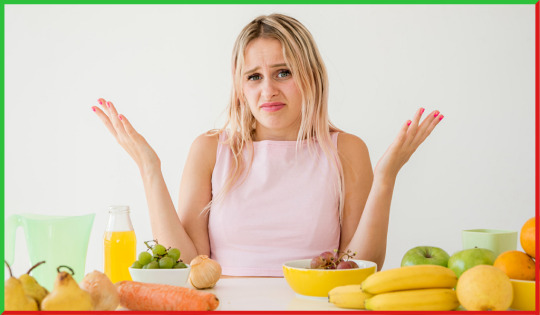
Hello everyone, today I will address the question of how to avoid gaining weight after a diet. The answer will be brief, but as I explain, you may have questions or doubts. In fact, I have already answered them in detailed articles. In the end, I will provide links where you can read comprehensive articles on all the topics mentioned here and dispel any doubts.
The Psychological Impact of Dieting

First and foremost, remember this: there are no biochemical reasons why you would regain weight after losing it. The sole reason for weight gain is consuming more calories than you burn. Therefore, people only gain weight after a diet due to psychological factors. The only way to prevent weight gain after a diet is by never going on a diet in the first place. Let me reiterate: dieting is not the solution. Now let’s discuss what you should do.
Our Innate Nature and Food
Throughout our 3 million years of existence, our human nature has been honed to eat as much as possible and store energy, as food scarcity was a constant challenge. Food has always provided us with biological pleasure. Furthermore, in today’s world, the shelves of stores are filled with an abundance of food-like substances that act as addictive drugs. These products are specifically designed to trigger addiction, intensify pleasure, increase appetite, and reduce the feeling of satiety. Add to that the societal norms that associate indulging in delicious and abundant food with prestige. We are bombarded by relentless advertisements, urging us not to deny ourselves these pleasures. We are all trapped in this cycle.
The Temporal Nature of Diets

In modern terms, a diet is a temporary alteration of our eating habits for cosmetic, athletic, or medical purposes. The keyword here is “temporary.” And what happens when you temporarily restrict yourself from something? It doesn’t matter what kind of pleasure it is; you start counting the days and hours until the restriction is lifted. That’s how our minds work. The dominant part of our brain cortex rapidly focuses on every external stimulus related to food. We feel like a tightly wound spring, compressed and twisted, relying on sheer willpower. However, this state cannot be sustained for long. And when the restriction is lifted, sooner or later, the spring unwinds, sweeping everything off the table and storing it as fat.
Changing Your Lifestyle for Lasting Results
To avoid feelings of depression, self-hatred, and self-reproach, let’s discuss what we should do. First and foremost, our appearance is not determined by the type of diets we follow but rather by our overall lifestyle. Therefore, we need to change our lifestyle permanently. Initially, it may seem like your life will become dull without your favorite foods, but that’s far from the truth.
After a couple of weeks of discomfort, your life will start to improve. Just like infants who are attached to the taste of breast milk, adults don’t salivate at the thought of it. We adapt and weaning ourselves off certain habits permanently means we no longer count the days until the restriction is lifted. Our brain will seek alternatives to replace pleasure.
Replacing One Pleasure with Another

The second step involves offering our brains alternative solutions that are incompatible with overeating. We have just discovered that if we wean ourselves off certain habits, we won’t experience any torment. The only thing that will bother us in social situations is seeing others indulge in chocolates and treats. But did we give up? No, instead, we replace one pleasure with another. Having an attractive appearance is socially more prestigious than indulging in endless chocolates and burgers. We replace the pleasure that is accessible to everyone with the pleasure that is accessible to only a few. We no longer suffer because someone else is enjoying a Big Mac.
Summing Up the Conclusions
Let’s summarize the key points and solidify our understanding. If you constantly go on diets, you will inevitably regain the weight you lost. Remember, your appearance is not determined by the type of diet you follow, but rather by your lifestyle. That’s what we will change permanently. To avoid feeling deprived, we don’t deny ourselves pleasure; instead, we replace it. That’s it. The circle is complete. Being healthy and having a toned, attractive body is delicious and prestigious. Eating and excreting are merely satisfying our taste receptors, something accessible to everyone.
Embracing the Right Lifestyle

So, what kind of lifestyle changes are not overly complicated yet lead to significant results? How can we do everything correctly? Where should we start to transform ourselves and achieve an attractive body and a happy life without relying solely on willpower? All of these topics are extensively discussed on my blog. New articles are published several times a week. Subscribe to stay updated and not miss any valuable information. Additionally, you can also receive a free consultation.
That’s all for today. Goodbye for now.
Recommended Articles to Read
Exposing the Era of Food Drugs 2023: The Hidden Menace
Your Path to Weight Loss: Portion Control
Master your Willpower 2023: Strategies Success
Replacing Deprivation with Excellence: The Mistake of Jake
#diet#slimmingworld#healthyeating#nutrition#healthyfood#healthyliving#fatburn#loseweight#burningcalories
1 note
·
View note
Text
Best Protein Decoded: Sports Nutrition | Protein Types

Hello everyone! In the world of sports nutrition, there is a multitude of names: gainers, proteins, isolates, hydrolysates, casein, and more. With so many options and enticing promises on the labels, how do we make the right choice? What is suitable for our needs, and are there any side effects? Today, we will dive into the world of sports nutrition to understand the purpose, benefits, and considerations when selecting protein supplements. Let’s get started!
The Role of Protein in Muscle Building

Protein serves as the primary building block for our muscles. To develop and strengthen our muscles, we need to provide them with the necessary building materials for new cell growth. This is where protein blends come into play. However, let’s clarify an important point from the start:
Consuming sports nutrition products does not directly cause muscle growth. The growth of muscles is determined by factors such as training, hormonal balance, and genetics. Sports nutrition, despite the claims written on its packaging, is simply a source of building materials. Therefore, the answer to the question of how much muscle can be gained from a protein powder is the same as that from regular protein sources in our everyday diet.
All the glamorous promises about achieving anabolic effects through sports nutrition are nothing more than marketing deception. In fact, the most harmful side effect of consuming sports nutrition is the misdirection it creates. What does this mean? We have a tendency to believe in the magical powder and the descriptions on the packaging. When individuals start their training regimen and incorporate sports nutrition, they hope that the results will come solely from the powder itself.
However, when progress is slow, they automatically begin searching for reasons within the sports nutrition product. Did they choose the wrong brand? Should they take more or consume it at specific times? Meanwhile, in 99% of cases, the reasons for lack of progress lie in the training process or diet. This misdirection leads to wandering in the dark, wasting money, and time, and ultimately losing motivation.
Remember, any sports nutrition product is a supplement, not a replacement for real food. Therefore, I strongly advise against using any sports nutrition until you have achieved consistent progress for at least two months. Now, let’s discuss protein powders in detail.
Types of Protein Powders

Protein powders can be categorized based on price, protein source, and absorption rate. Protein sources can include whey, egg, plant-based options (such as soy or pea), and, less commonly, meat and fish. The most expensive raw materials are meat and egg protein, while plant-based proteins tend to be more affordable. However, plant-based proteins have some unpleasant aspects, as I discussed in my previous video on vegetarianism, such as their lower biological availability. This means that out of 100 grams of plant protein consumed, only about 60% may be effectively absorbed by the body.
It’s important to note that our muscles are composed of protein, which, in turn, consists of dozens of amino acids. One of the downsides of plant proteins is that they require a combination of various sources to obtain all the essential amino acids in the right proportions. Although there are other nuances to consider, my advice is simple: if you see “plant-based protein” mentioned in the description, avoid purchasing that particular protein powder. It’s a waste of money.
The most recommended options, in terms of quality, are whey protein isolate and egg protein. These proteins offer high biological availability and an excellent amino acid profile. Additionally, whey protein comes in three main forms: concentrate, isolate, and hydrolysate. The main difference between these forms lies in the methods used to extract and purify the protein, which affects its overall purity and composition.
Whey concentrate is the least pure form, as it can contain small amounts of fat, lactose, and other compounds. However, it is also the most affordable option and still provides a good amount of protein per serving. Whey isolate, on the other hand, undergoes additional processing to remove most of the fat and lactose, resulting in a purer protein powder. This makes it a suitable choice for individuals who are lactose intolerant or have digestive issues.
Lastly, whey hydrolysate is a pre-digested form of whey protein that is rapidly absorbed by the body. It undergoes enzymatic processing, breaking the protein into smaller peptides for quicker absorption. This form of whey protein is often recommended for athletes who require fast nutrient delivery, such as post-workout recovery.
Egg protein is another high-quality option, providing a complete amino acid profile. It is lactose-free and suitable for individuals with dairy allergies or sensitivities. Egg protein is slowly digested, which makes it a good choice for sustained muscle protein synthesis throughout the day.
Casein protein, derived from milk, is known for its slow digestion and prolonged release of amino acids. It forms a gel-like consistency in the stomach, resulting in a sustained and gradual absorption of protein. This makes casein protein an ideal choice as a nighttime or bedtime supplement, as it can provide a steady supply of amino acids to support muscle recovery during sleep.
Choosing the Right Protein Supplement

When selecting a protein supplement, consider your individual needs, preferences, and dietary restrictions. If you are lactose intolerant or have digestive issues, whey isolates or egg protein may be better options. If you’re looking for a slow-digesting protein, casein protein can be beneficial. Evaluate the amino acid profile, absorption rate, and overall quality of the product to ensure it aligns with your goals.
Additionally, be cautious of exaggerated marketing claims and avoid products that promise unrealistic results. Remember that proper training, nutrition, and recovery play a more significant role in muscle growth than any supplement alone.
Conclusion

Protein supplements can be a convenient way to support your muscle-building goals, but they should be viewed as a supplement to a balanced diet rather than a substitute for real food. Understand that the quality, source, and composition of protein supplements can vary, so choose wisely based on your individual needs.
Focus on optimizing your overall nutrition, training regimen, and recovery strategies to maximize your muscle-building potential.
Remember, building muscle is a gradual process that requires consistency, patience, and a holistic approach. Utilize protein supplements as a tool to complement your efforts, and remember that they are just one piece of the larger puzzle of sports nutrition.
Stay dedicated, train smart, and fuel your body with the nutrients it needs to achieve your fitness goals. Good luck on your muscle-building journey!
If you liked this blog, check out:
Unleash BCAAs’ Power 2023: Fuel Success in Sports Nutrition
1 note
·
View note
Text
How to Determine Whether You Can Eat a Certain Food or Not

Greetings, my friends! Today, we are going to discuss the most important topic: how to determine whether you can eat a particular food or not. For the past seven years, there has been one question that has remained the most popular: “Can I eat this or that?” Let me tell you two methods today, through which each of you can clearly determine whether a specific food is suitable for you or not. Well, to be precise, it would be more accurate to say whether you need to eat it or not, but let’s not get caught up in the details. Let’s get started.
Understanding the Theory

Before I introduce these two methods, let’s delve a little deeper into the theory. What does it mean when we ask whether we can eat a certain food? Firstly, we are primarily concerned with whether consuming that food will result in the storage of excess energy as fat. Secondly, if we want to lose weight, we need to consider whether that food will hinder our weight loss efforts.
From this perspective, we will evaluate all the foods we theoretically test today. We need to determine whether a particular food will impede weight loss and, consequently, whether the surplus of that food will be deposited as fat if we start consuming it. Now, let’s begin by understanding that our bodies are governed by hormones.
The Role of Insulin
Hormones are biologically active substances secreted by the glands of the endocrine system. Today, we will focus on one of the most important hormones: insulin. Although there are countless hormones, if you simply monitor insulin, you can achieve 70% of the desired results. This is a significant fact, and it is from this perspective that we will decide whether a specific food can be eaten or not.
I have already written a detailed article about insulin. Please take the time to read it as it contains crucial information. For the sake of autonomy, I will briefly recap everything covered in that article, without providing evidence, just summarizing the key points.
Insulin is a hormone secreted by the pancreas, and its main role is to regulate the level of sugar in our blood. What are the characteristics of insulin? Firstly, if insulin exceeds certain threshold values, meaning if its level is high, the body completely blocks fat burning. Remember this: lipolysis, the breakdown of fats, does not occur at high insulin levels. In other words, if we consume something that significantly raises our insulin level, fat burning becomes impossible.
We may lose weight due to a calorie deficit, but not through fat burning. This is the first aspect. On the other hand, if we consume something in excess of our calorie needs, a high insulin level will quickly store it in fat deposits. Consequently, we need to ensure that insulin remains stable and does not spike. We need to maintain a consistent and steady insulin level.
The Relationship Between Insulin and Blood Sugar

So, what determines the level of insulin in our bodies? The level of insulin is directly proportional to the level of glucose or sugar in our blood. When the blood sugar level is high, insulin levels rise to transport glucose to the necessary cells and locations. When blood sugar or glucose levels are low, insulin levels decrease, making it easier for us to lose weight and fat accumulation is prevented.
Now we come to the question of what determines our blood sugar level. It depends on the very foods we consume. This brings us to the crucial question: can we eat a particular food?
Understanding the Glycemic Index
Now, let’s bring everything together. We eat a certain food, but we don’t yet know how it affects our blood sugar level. Let’s suppose we consume one product and our blood sugar level rises slowly and steadily, while with another product, it spikes rapidly. Along with this sudden spike, insulin jumps in and completely blocks fat burning.
From this, we conclude that we should avoid foods that lead to a high and rapid increase in blood sugar levels. Instead, we should opt for foods that gradually and slowly elevate our blood sugar levels, providing us with sustained energy. But how can we determine this?
Long ago, all foods were classified based on the glycemic index to determine whether they can or cannot be eaten. What is the glycemic index? It is an indicator of how a particular food raises blood sugar levels compared to pure glucose, which is assigned a value of 100. Glucose serves as the benchmark. We compare the foods we consume, measure how much they raise our blood sugar, and roughly estimate how insulin will respond to that increase. If the blood sugar level exceeds that of glucose, it means categorically that we should not consume that food because glucose is pure sugar, and it is well known that pure sugar does not contribute to weight loss.
If the blood sugar level only rises slightly, then that food can be eaten. It will provide energy without causing weight gain or hindering weight loss. How can we determine how much of a particular food can be consumed relative to glucose? It is considered beneficial and good if the glycemic index of a food is 50 or lower. The lower the glycemic index, the better it is for us. This means that less insulin is released, making it easier to burn fat and reducing the likelihood of excess calories being stored as fat.
Now, let’s smoothly transition to the moment when we have a certain product in our hands, but we don’t know its composition. How can we determine if we can eat it or not?
Method 1: Testing with a Glucometer
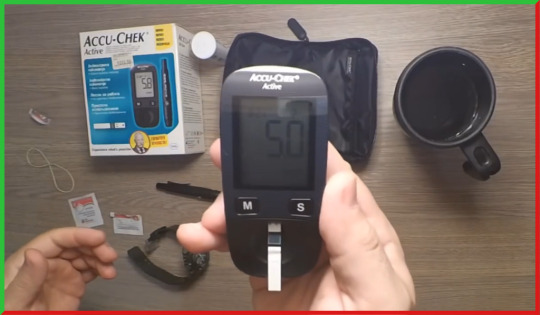
So, the first method is very accurate and individualized because it provides you with an answer as to how a specific product may or may not be suitable for you. However, it requires some effort. To implement this unique method, you will need a regular glucometer, several packs of glucose tablets, and, please make sure the glucose you purchase does not contain ascorbic acid. Additionally, you will need the specific products you want to test. For the sake of experiment integrity, I have taken regular oats, which I usually consume, and we will be testing them. Of course, kitchen scales will also be necessary.
Let me explain what you need to do. First, you only need to do this once; it’s not a repeated process. We need to determine how your specific body reacts to pure glucose, which has a glycemic index of 100. To do this, we will use the glucometer and glucose strips to measure your initial blood sugar level before consuming any glucose or other foods.
This means you should measure your fasting blood sugar level, which is the level upon waking up after not eating throughout the night. This ensures there are no confounding factors from other foods. So, measure your initial blood sugar level, and after that, consume 30 grams of pure glucose. Then, we can begin taking measurements.
During the first hour, measure your blood sugar level every 15 minutes, and during the following hour or two, measure it every 30 minutes. As a result, we will obtain a standardized curve, a graph depicting your body’s reaction to glucose.

Please record this data and the curve. We won’t need to repeat these actions. This is your benchmark, your reaction to a product with a glycemic index of 100. You will compare all other foods directly to this curve, and the comparison is straightforward.
Testing with Oatmeal
Let’s now take oatmeal as an example and determine whether we should or should not consume them. Since in our benchmark experiment, we used 30 grams of pure carbohydrates (glucose), our task is to obtain 30 grams of carbohydrates from the product we want to test.
Important note: We need 30 grams of carbohydrates from the product, not 30 grams of the product itself. This is crucial in determining the glycemic index of these carbohydrates. Now, let’s take a look at the oatmeal package I have here. It contains approximately 30 grams of carbohydrates. We prepare it with boiling water and proceed with the same measurements as before.
In the morning, on the next day, when there are no other foods that could affect our blood sugar levels, we measure our fasting blood sugar level before starting the experiment. After that, we consume our wonderful oatmeal and continue taking measurements. During the first hour, we measure every 15 minutes (four measurements), and during the following hour, we measure every 30 minutes. This allows us to obtain a comparable curve that we can compare to the benchmark curve we obtained with glucose.
As a result, we have obtained the following graph:

It’s worth noting that for convenience, I normalized the glucose level to the initial level, so it starts from one. This is just a normalization level, and there’s nothing mathematically complex about it. I divided all the readings by the initial blood sugar level. As you can see from the graph, the blue line represents the increase in blood sugar from glucose, which has a glycemic index of 100, and the red line represents the response to oatmeal.
You can see that oatmeal doesn’t have the same impact on my body as glucose. Therefore, it is suitable for consumption. It is a good source of slow carbohydrates, and it doesn’t cause sharp spikes in insulin, which is associated with glucose. This means that if I desire, fat burning will not be hindered, and excess calories will not be stored as fat.
My friends, despite the initial complexity of working with a glucometer and this method, I assure you that it’s not difficult at all. You only need to test each product once in your lifetime if you have a strong desire to consume it. After that, you will be 100% certain whether you can eat it or not. In the 21st century, this is a normal professional approach because the quality of products available in stores is often terrible. We have no idea what is actually packed into those pasta boxes, whether they are truly made from high-quality wheat. It’s better to test and be sure than to be disappointed later and wonder why you can’t lose weight.
Stay tuned for the next part of the transcription, where we will continue exploring the methods to determine whether you can eat a particular food or not.
Method 2: Using the Internet to Determine Glycemic Index

If the first method seems too complicated and you don’t want to prick your fingers, there is another method that only requires internet access. However, this method is less precise, and the main issue is that it averages out the values for various products. You won’t know exactly which specific product you bought from the store matches the description in the table. For example, there are many types of pasta, and you might not know if the pasta you found on the table is the exact one you purchased. Nevertheless, this method still works.
What do you need for this method? As we discussed earlier, we should consume foods with a glycemic index of 50 or lower, ideally. Therefore, glycemic indexes have already been calculated for all products. All you need to do is take your favorite product and search for it on Google along with the term “glycemic index.” You will be presented with an enormous amount of tables describing the glycemic index of various foods. Your task is to choose the most reliable data.
To be honest, I don’t know the best way to determine the reliability because I don’t have much trust in the internet or food manufacturers. They can claim that the pasta is made from durum wheat flour, but who knows what it actually contains? It should be great according to their claims, but when you measure it with a glucometer, you realize its glycemic index is around 80, and there you have it—a fatty setback. Ultimately, it’s a matter of luck in this case.
If you’re lucky and the manufacturer truly delivers what they promise, you choose a product with a glycemic index of 50 or lower, and everything is fine. However, if you choose a product with a glycemic index of 50 or higher, it is highly undesirable because it will cause a spike in insulin levels, hindering your fat-burning process. And if you’re trying to gain weight, it will contribute to excess fat accumulation. So, it’s actually quite simple.
Conclusion: Determining Food Suitability

Let’s summarize once again. When we ask ourselves if we can eat a particular food, our main concern is whether it will hinder our fat-burning process or lead to weight gain. Typically, the hormone insulin answers this question. Our primary goal for weight loss is to maintain insulin levels at a moderate level because insulin blocks fat burning and promotes fat accumulation. Insulin constantly adjusts itself to match blood sugar levels—higher blood sugar levels result in higher insulin levels. Therefore, we need to consume foods that cause less of a spike in blood sugar levels.
The glycemic index was developed long ago as a comparison of each food product to pure sugar or glucose, with glucose assigned a value of 100. Thus, when we say a particular product has a glycemic index of 50, it means that in the same amount as glucose, it raises blood sugar levels only half as much as glucose does. A value of 80 means the food raises blood sugar levels to 80% of the level caused by glucose.
Which products can we consume? It is important for us to consume foods with a glycemic index of 50 or lower. This ensures that our blood sugar levels won’t spike too high, and insulin levels won’t rise accordingly, allowing us to lose weight without hindrance. We have two methods to determine the suitability of a food product. The first method is highly accurate and individualized, but it requires you to purchase a basic glucometer. You then create your own personal standard curve once and for all. Your personal curve represents your body’s response to pure glucose, which corresponds to an index of 100. From there, you can compare all other products you wish to try against this standard curve.
The second method, if you find the first method too complex, is to use the Internet. Simply search for the name of your product along with the term “glycemic index,” and you will find information about the glycemic index of that particular product. You can confidently consume all products with a glycemic index of 50 or lower. If you are in a calorie deficit, you will lose weight. It is undesirable to consume products with a glycemic index higher than 50. That’s how simple it is.
So, my friends, this was the answer to the question of whether you can eat something and how to determine it. That’s all for today. Goodbye, everyone!
#diet#slimmingworld#healthyeating#nutrition#healthyfood#healthyliving#fatburn#loseweight#burningcalories
1 note
·
View note
Text
Crush Perfectionism. Unveiling Weight Loss Mistakes

The Perfectionist’s Original Sin
Greetings, friends! Today, I want to shed light on a formidable sin that obstructs our journey toward self-transformation. It’s time to confront the primal sin of perfectionism. As promised, I occasionally create articles that I believe can genuinely assist you, even though they may not align with popular search trends. While there might not be a significant search volume for such topics, I am confident that this article will prove valuable. So, let’s dive in.
Understanding the Perfectionist’s Predicament

One of my earlier articles addressed a weight loss mistake—specifically, the perilous trap of mirror meditation. Today, I want to discuss another aspect: the common errors often committed by individuals embarking on a fresh start, commonly known as the perfectionist’s complex. So, what exactly is a perfectionist? A perfectionist is someone who constantly strives for perfection in everything they do, not settling for anything less than ideal.
The origins of this complex can be left to psychotherapists and psychiatrists or even philosophers to decipher. However, what I want to convey today is that perfectionism is a profound affliction. It is particularly detrimental when it comes to weight loss journeys. Throughout my life, I have encountered individuals who were exemplary employees according to all performance metrics, yet utterly ineffective when it came to producing tangible results. The reason behind this paradox lies in their perfectionism. They refused to commence any task until everything was flawless.
Unfortunately, life doesn’t adhere to such ideals. Our lives can never be perfect. We can never be 100% happy or 100% unhappy. We can never be fully prepared for exams or adequately equipped to face life’s challenges. Time, unfortunately, is limited, and when someone says, “I’m not ready,” “I haven’t learned enough,” or “I’m not prepared,” it’s good to have a teacher. However, in the real world, where time is a scarce resource, it’s essential to start yesterday and begin our new lives, even if there are things we haven’t yet discovered. The biggest sin is abstaining from the fight simply because we haven’t perfected the art of striking within the confines of time.
In fact, this perfectionist’s complex not only hampers the individual but also affects those around them. Working with such individuals becomes nearly impossible. They might be superior to others in terms of skill and ability, but when it comes to completing a task, they fall short simply because it’s not perfect. Life, however, continues to move forward, and opportunities pass by while they remain fixated on unattainable standards.
Breaking Free from the Perfectionist’s Complex

Today’s article will be brief, focusing on one crucial aspect—let’s liberate ourselves from the grip of the perfectionist’s complex. We shall embark on our journey of change, embracing the unknown and learning as we progress. It’s time to let go of the burden of perfectionism and initiate our new lives starting from this very moment.
#diet#slimmingworld#healthyeating#nutrition#fatburn#healthyliving#healthyfood#loseweight#burningcalories
1 note
·
View note
Text
Essential Omega-3s Unleashed: Boost Health

Hello everyone! Today, I want to discuss the significance of fats in our diet, we will also talk in detail about Omega-3 essential fats. Fats are one of the three essential components of nutrition, along with proteins and carbohydrates. Our bodies require fats to function properly, and insufficient fat intake can lead to internal organ issues, impaired brain function, memory disorders, depression, decreased testosterone production, and more. However, as with everything in life, balance is crucial. Let’s delve into the details.
The Basics of Fats

Fats are essentially composed of glycerol and fatty acids. They can be categorized as saturated or unsaturated fats. This classification is based on their chemical structure, which we don’t need to delve into. Just remember that unsaturated fats (or fatty acids) are primarily found in solid animal fats like lard and butter, while unsaturated fats include fish oil and liquid vegetable oils.
Understanding the need for both types of fats
We need both types of fats in our diet. Although there is no precise recommended fat intake, similar to calorie requirements that vary from person to person, it is generally considered advisable to consume around 1-2 grams of fat per kilogram of body weight. This figure, however, is only an approximation. As a general guideline, I recommend obtaining around 10% of your daily caloric intake from fats.
Many people may perceive this as a small amount, but keep in mind that when you consume food, you automatically consume fats as well since it’s impossible to completely eliminate fats from food. Even when eating chicken breast, cheese, cottage cheese, or even grains, you still ingest a certain percentage of animal fats. Therefore, you will likely meet your required fat intake. Most of these fats will be saturated fats.
Understanding the Role of Essential Fatty Acids
It’s worth noting that saturated fats are not considered essential. This means that if there is a deficiency in a specific fatty acid, the body can synthesize it on its own. However, when it comes to essential fatty acids, it’s a different story. These are the fatty acids that the body cannot synthesize and must obtain from dietary sources. This applies to certain unsaturated fatty acids, and let’s discuss them in more detail.
Exploring Omega-3 Fatty Acids

Due to their chemical structure, unsaturated fatty acids are referred to as omega-3, omega-6, and omega-9 fatty acids. You don’t need to know the intricate details, but it’s important to remember that omega-6 and omega-9 fatty acids are abundant in vegetable oils, and they are also considered replaceable unsaturated fatty acids. However, let’s focus more on omega-3 fatty acids.
The primary polyunsaturated essential fatty acids in the omega-3 family are alpha-linolenic acid (ALA), eicosapentaenoic acid (EPA), and docosahexaenoic acid (DHA). For simplicity, I will refer to these complex names as EPA and DHA from now on. The spectrum of their effects is vast, ranging from accelerating the metabolism to CNS (central nervous system) restoration and mood enhancement.
Obtaining Essential Omega-3s
Now, let’s discuss where and how we can obtain these essential fatty acids. The primary sources of omega-3 fatty acids are flaxseed oil and fish oil. However, it’s important to note that recent studies suggest that the conversion of alpha-linolenic acid (ALA) into EPA and DHA is limited, rendering it insufficient to meet our body’s needs. While flaxseed oil contains ample amounts of ALA, it may not provide an adequate supply of EPA and DHA. On the other hand, fish oil or dietary supplements can be considered a more reliable source of these essential fatty acids.
Considering Dietary Supplements
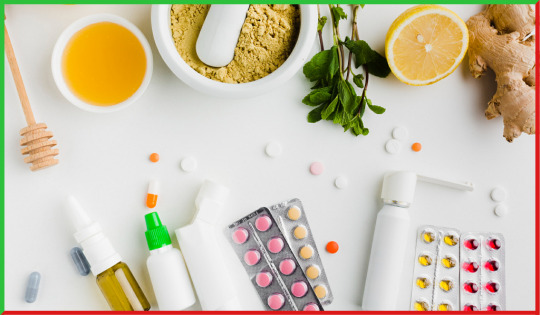
When it comes to meeting our requirements for omega-3 fatty acids, particularly EPA and DHA, dietary supplements become a crucial consideration. Since some fish species available in the market may not be wild but rather farm-raised and fed with inexpensive feed, they may lack the desired levels of EPA and DHA. Therefore, dietary supplements offer a guaranteed and convenient source of these essential fatty acids. The recommended daily intake for individuals engaged in regular physical activity ranges from 2 to 3 grams.
Personal Approach and Conclusion
In my personal dietary approach, I always incorporate flaxseed oil into my meals. However, during intense physical activities or workouts, I introduce additional sources of EPA and DHA in the form of dietary supplements.
In conclusion, fats are an essential component of a balanced diet and play a crucial role in maintaining optimal health. While saturated fats should be consumed in moderation, unsaturated fats, including essential fatty acids like omega-3, are vital for our well-being. Finding the right balance of fats in our diet is key to reaping their benefits.
Incorporating plant-based oils, such as olive oil and avocados, along with fish oil or dietary supplements rich in omega-3 fatty acids, can help ensure an adequate intake of essential fats. Remember, individual needs may vary, so it is important to listen to your body and seek professional guidance if needed. By making informed choices and embracing a balanced approach, we can harness the power of fats and optimize our overall health and well-being.
Remember, a healthy lifestyle is not just about fats but also includes a balanced intake of proteins, carbohydrates, vitamins, minerals, and regular exercise. Embrace a holistic approach to nutrition and prioritize a varied and balanced diet to support your overall health goals.
1 note
·
View note
Text
The Power of Dietary Fiber. Its Important Role in Digestion

Hey everyone! Today, we’re diving into the topic of dietary fiber. Dietary fiber refers to the indigestible portion of food that can be broken down by the gut microbiota. In simple terms, before our bodies can utilize most types of food, they need to undergo a process of breaking down into simpler substances that can be absorbed into the bloodstream. This process is called fermentation. However, fiber, which consists of glucose molecules arranged in a way that digestive enzymes cannot break down, stands out. Consequently, our bodies are unable to extract energy from fiber.
For a long time, fiber was referred to as “bulk material,” and food technologists even developed methods to remove fiber from products. This process was called refining, and a prime example is refined sugar, where the fiber from sugar beets or sugarcane was removed to obtain refined sugar. Another example we’ll come back to is the rice polishing process, which converts brown rice into white polished rice.
Refined vs. Unrefined Products
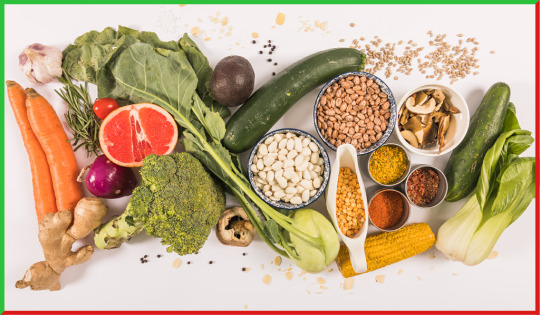
What sets refined products apart from unrefined ones? The main difference lies in the fact that carbohydrates in refined products have a higher glycemic index compared to their original counterparts. Let me remind you that those concerned about their body’s appearance pay attention to the hormone called insulin. For more details, you can check it out here, but let me now present the conclusions:
Insulin tends to hinder fat burning and promote fat storage. Therefore, to avoid gaining weight or losing weight by burning fat, we should avoid consuming products that stimulate high insulin secretion. To assess this, we rely on the so-called glycemic index, where higher values are worse for us. Now, here’s an interesting fact: brown rice has a glycemic index of around 50, while white polished rice has a glycemic index of 85, which is quite high.
The reason for this difference is that cellulose has been removed from brown rice during the process of turning it into white polished rice. Thus, one of the most important properties of cellulose is its ability to lower the glycemic index of food products. But is there anything else? Of course, there is!
Fiber and Satiety
First and foremost, dietary fiber plays a crucial role in the formation of bulk in the intestinal contents. This means that:
Satiety: Fiber promotes a sense of fullness and satisfaction after a meal.
Bowel Regularity: It stimulates the peristaltic movement of the intestines, thereby supporting regular bowel movements.
For those who experience changes in bowel movements due to reduced food volume, especially when on a diet, it is essential to incorporate fiber-rich foods into their meals.
Fiber and Gut Microbiota
The second reason to embrace dietary fiber is its role in maintaining healthy gut microbiota. Since fiber cannot be broken down by digestive enzymes, it is processed by bacteria. Insufficient fiber intake can lead to imbalances in gut flora, resulting in unpleasant conditions such as dysbiosis.
Fiber as a Natural Detoxifier
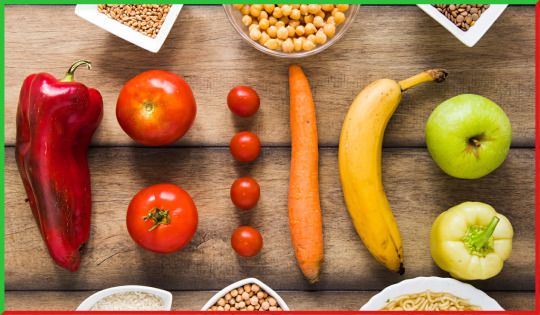
Lastly, fiber acts as a natural sorbent, effectively removing toxic substances that enter our bodies through water and food. It helps cleanse our system by binding to harmful compounds and aiding in their elimination.
Types of Fiber
There are two main types of fiber: soluble and insoluble. Each type offers unique benefits:
Soluble Fiber: Soluble fiber works as an excellent sorbent, lowering cholesterol levels and assisting in the removal of toxins like mercury. It can be found in grasses, legumes, vegetables, and fruits.
Insoluble Fiber: Insoluble fiber improves intestinal motility and acts as a preventive measure against constipation. It is primarily found in grains.
Fiber-Rich Foods
Now, let’s address the remaining questions: where to find fiber and how much should we consume? Take a look at the table for a comprehensive list of fiber-rich foods. In summary:
– To increase soluble fiber intake, include more greens in your diet. Don’t worry about counting the amount of broccoli you eat – it will be beneficial. During weight loss, the body eliminates a significant amount of toxins, and fat, although highly caloric, is a rather dirty fuel for our bodies.
Recommended Daily Intake
Regarding the recommended daily intake of fiber, I believe it should be no less than 20 grams per day. This amount will provide numerous health benefits and support optimal digestion.
Conclusion

That wraps up our discussion on the power of dietary fiber. Share this valuable information with your friends and remember to prioritize both beauty and good health. Until next time, take care and goodbye for now!
#diet#slimmingworld#healthyeating#nutrition#fatburn#healthyfood#healthyliving#loseweight#burningcalories#weight loss
1 note
·
View note
Text
Insulin 101: Its Role in Bodybuilding and Weight Loss

Hey, everyone! Today’s article is going to be an introductory guide to insulin. For those who have been following my articles for a while, you’re already familiar with the three key factors for weight loss:
Caloric deficit
Increased metabolism
Avoiding insulin spikes
However, for those who are not looking to lose weight but rather gain muscle, you may have heard that it’s necessary to consume something sweet after a workout to replenish your carbohydrate stores, which can cause a rise in sugar levels and an increase in insulin. So, what should you do? Is insulin good or bad? Let’s dive into the topic and find out.
The Role of Insulin

So, what exactly is the purpose of insulin? Insulin is a hormone produced by the pancreas, and its main task is to regulate blood glucose levels, preventing them from rising too high. When there is an excess of glucose in the blood, it can lead to a condition called hyperglycemic coma. To prevent this from happening, the pancreas secretes insulin, which helps remove the excess glucose from the blood and store it in various storage sites. There are three main storage sites:
Glycogen stores in the liver
Glycogen stores in the muscles
Fat stores
The first two storage sites are essential for our body’s energy needs, particularly for muscle function. However, the third storage site, fat stores, is not necessary, but insulin doesn’t discriminate. To make matters more challenging, our glycogen stores are limited, with about 200 grams in the liver and 300 grams in the muscles, whereas fat stores are virtually limitless. We can keep storing fat day and night, and they only continue to grow…
The Benefits of Insulin
Now that we understand the role of insulin, let’s explore the positive effects it can have:
Insulin replenishes our body’s glycogen stores, acting as fuel tanks.
When there is a need for protein synthesis, insulin facilitates the process.
Insulin prevents muscle breakdown and acts as an anti-catabolic agent.
Insulin also transports BCAA (branched-chain amino acids) directly to our muscle cells.
You can read more about BCAA in a corresponding article.
The Downsides of Insulin

On the flip side, let’s discuss the negative effects of insulin:
As I mentioned earlier, without delving into complex biochemical processes, insulin transports excess glucose into fat cells.
Insulin significantly inhibits lipolysis, which is an essential step in fat burning.
As long as insulin is present in the body, it utilizes glucose instead of oxidizing fatty acids, thus hindering the fat-burning process.
Managing Insulin
So, we’ve acquainted ourselves with insulin, and it’s both a blessing and a challenge. However, we can control it by understanding its predictability. We can create the right conditions through nutrition, exercise, and lifestyle choices that allow insulin to transport substances to the desired storage sites without replenishing the ones we don’t want. These conditions ensure that insulin helps build the tissues we desire, namely muscles, while not interfering with utilizing stored fat for our energy needs.
As you already know, I’ve always emphasized that simultaneously building muscle and losing fat is not an easy task. Now, you have another reason for it—insulin. Therefore, to determine what we want from insulin, we must first decide whether our goal is muscle growth or fat loss. During muscle growth, some fat gain is inevitable, and during weight loss, some muscle loss is unavoidable. The key lies in managing the proportions of these gains and losses.
Conclusion

Today’s article provided an informative overview, but it’s impossible to provide a comprehensive recipe for weight loss or muscle gain within a single post. Many effective strategies can be found in my blog, and this article aims to enhance your understanding of what happens in your body during weight loss or muscle gain. Keep reading my articles, and don’t miss out on new ones, as there will be plenty more to come. That’s all for now, and see you soon!
#loseweight#healthyfood#healthyliving#fatburn#burningcalories#nutrition#healthyeating#diet#slimmingworld#caloriecounting
1 note
·
View note